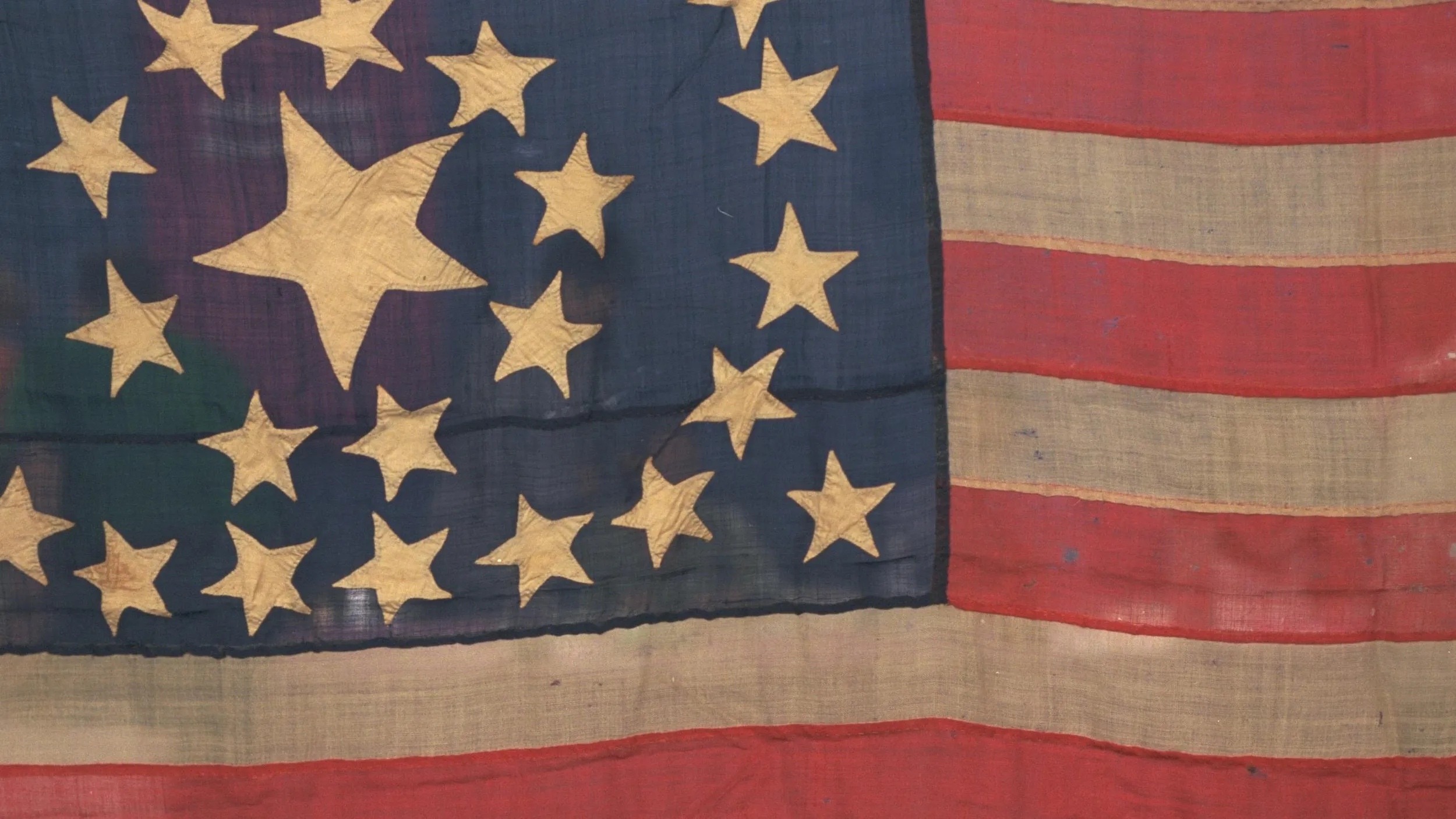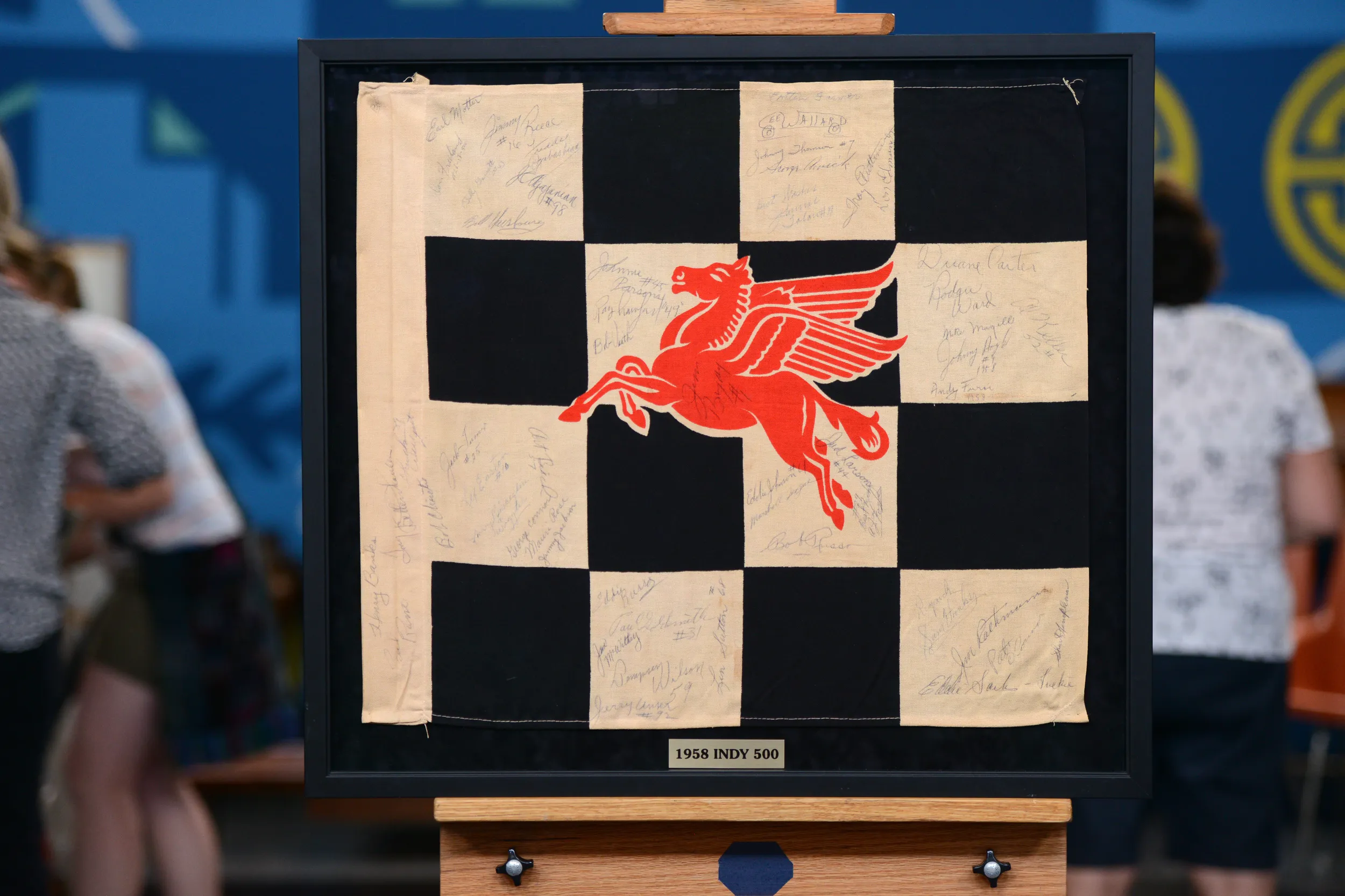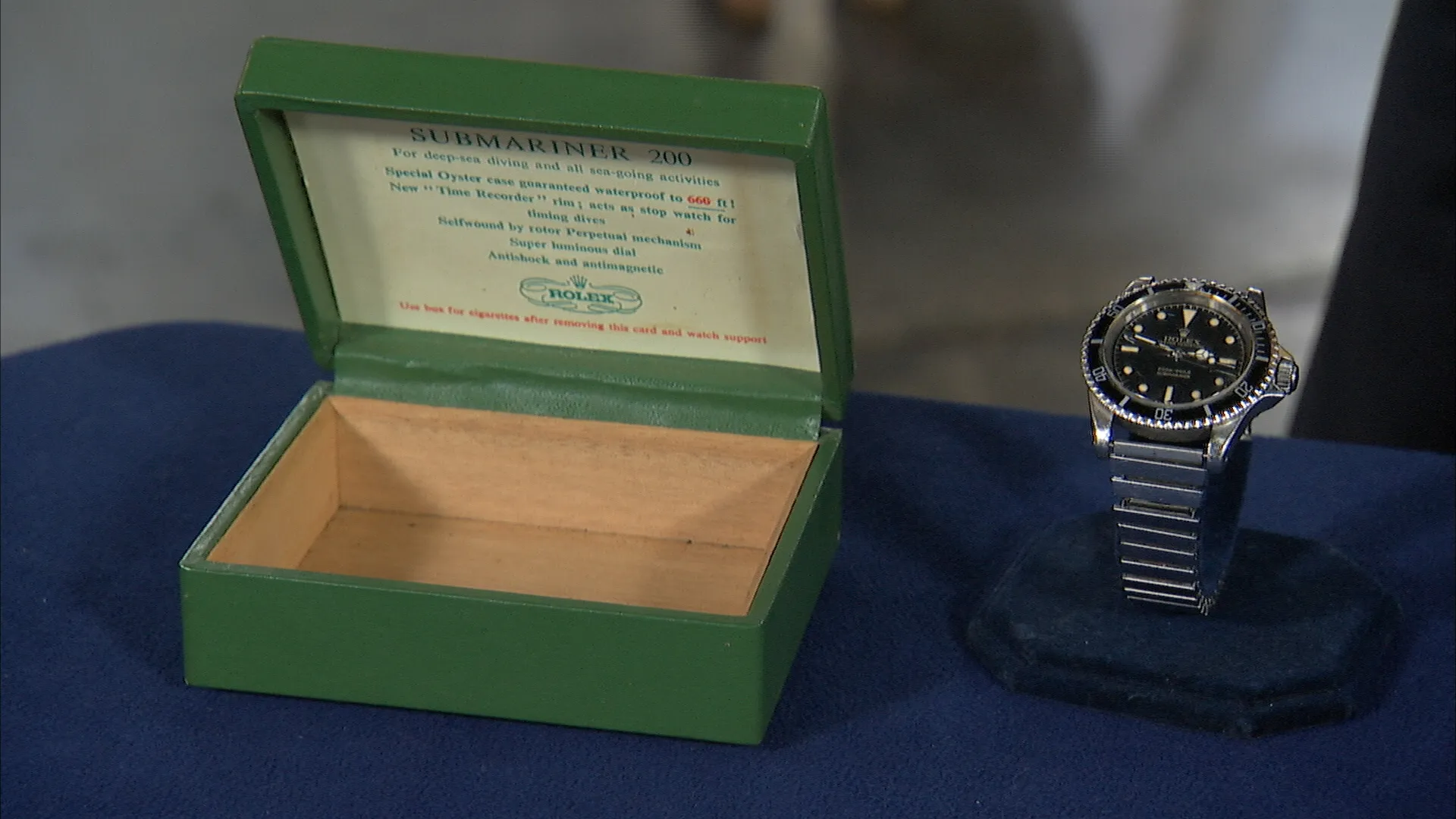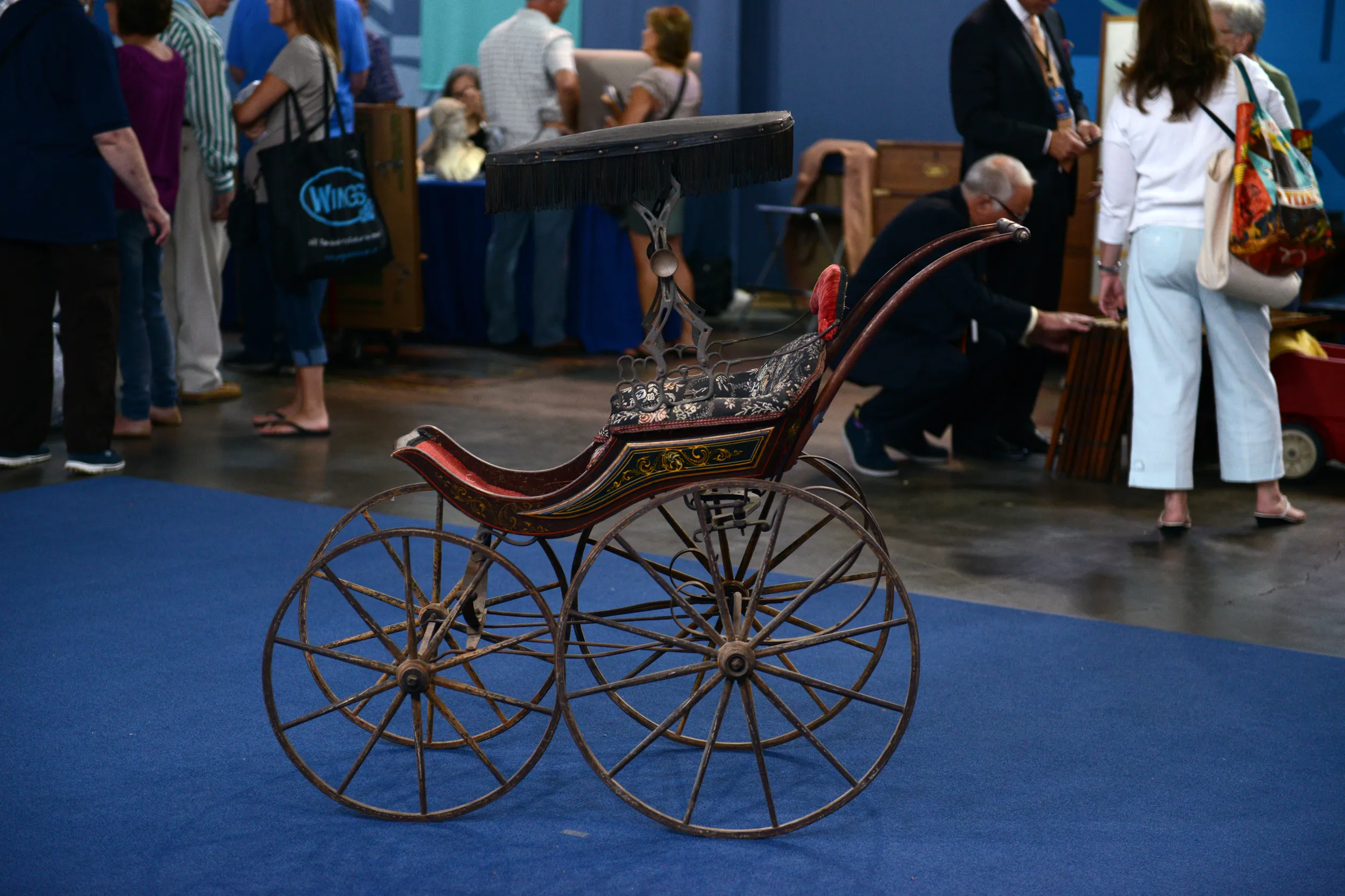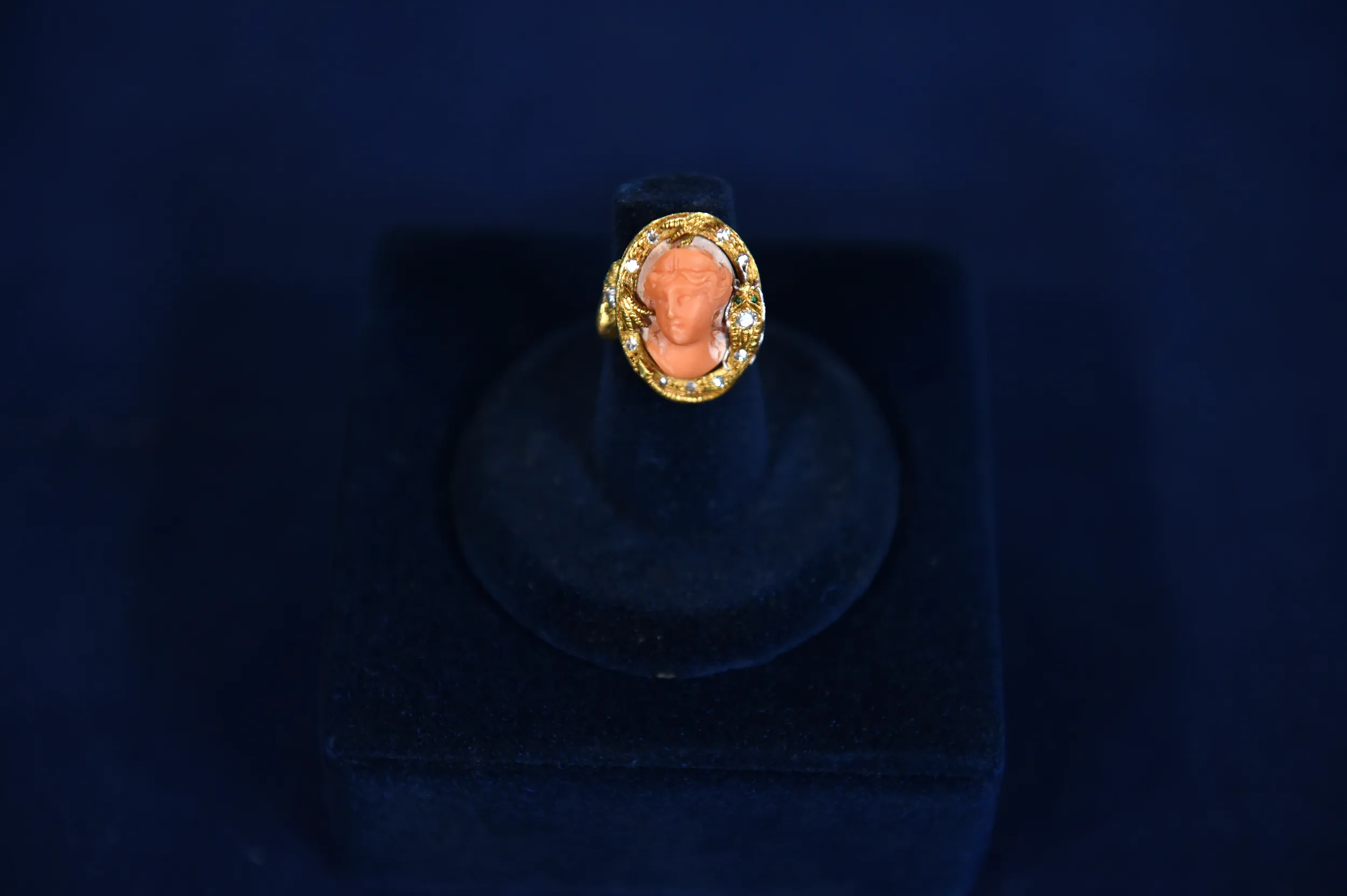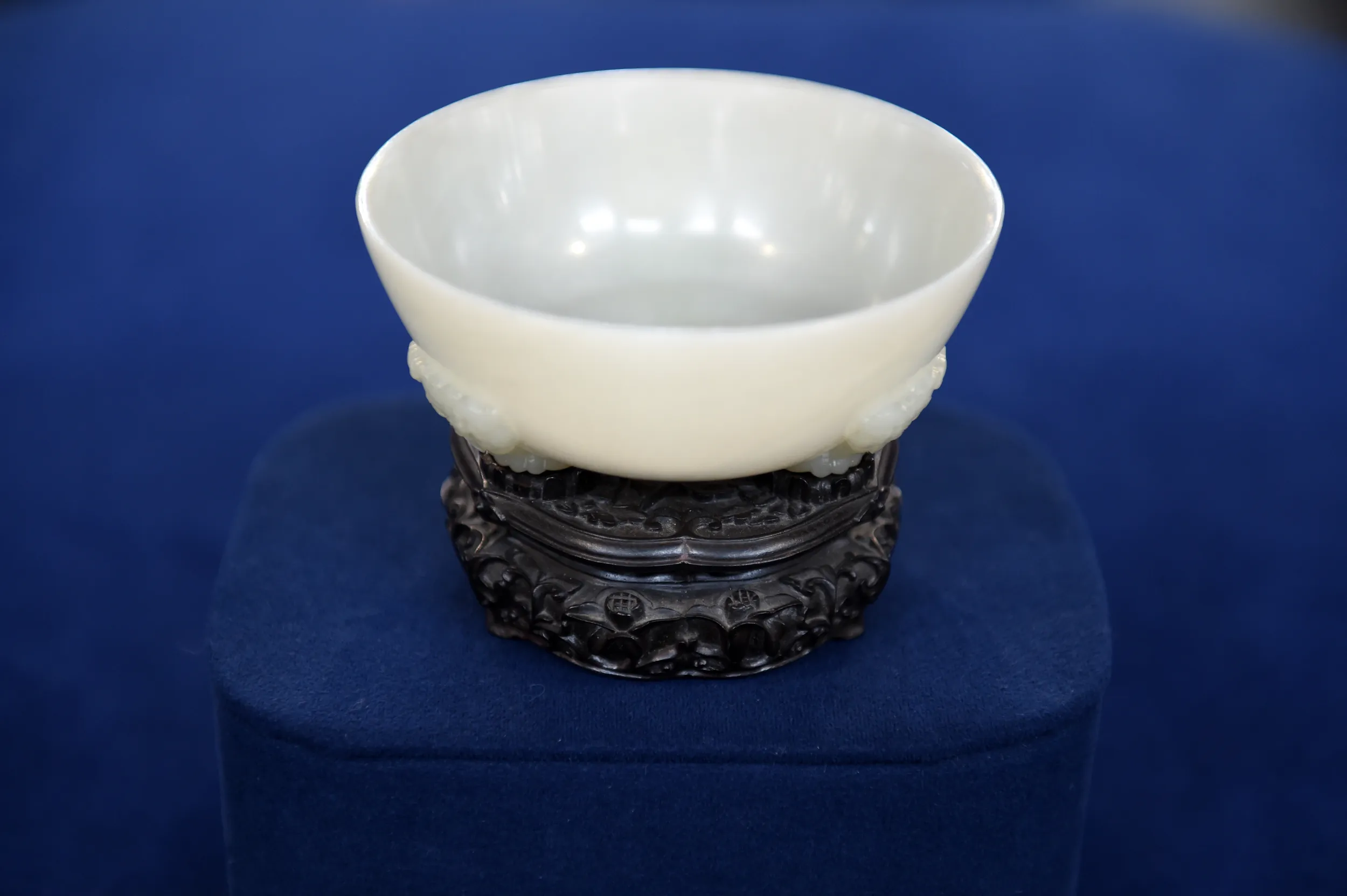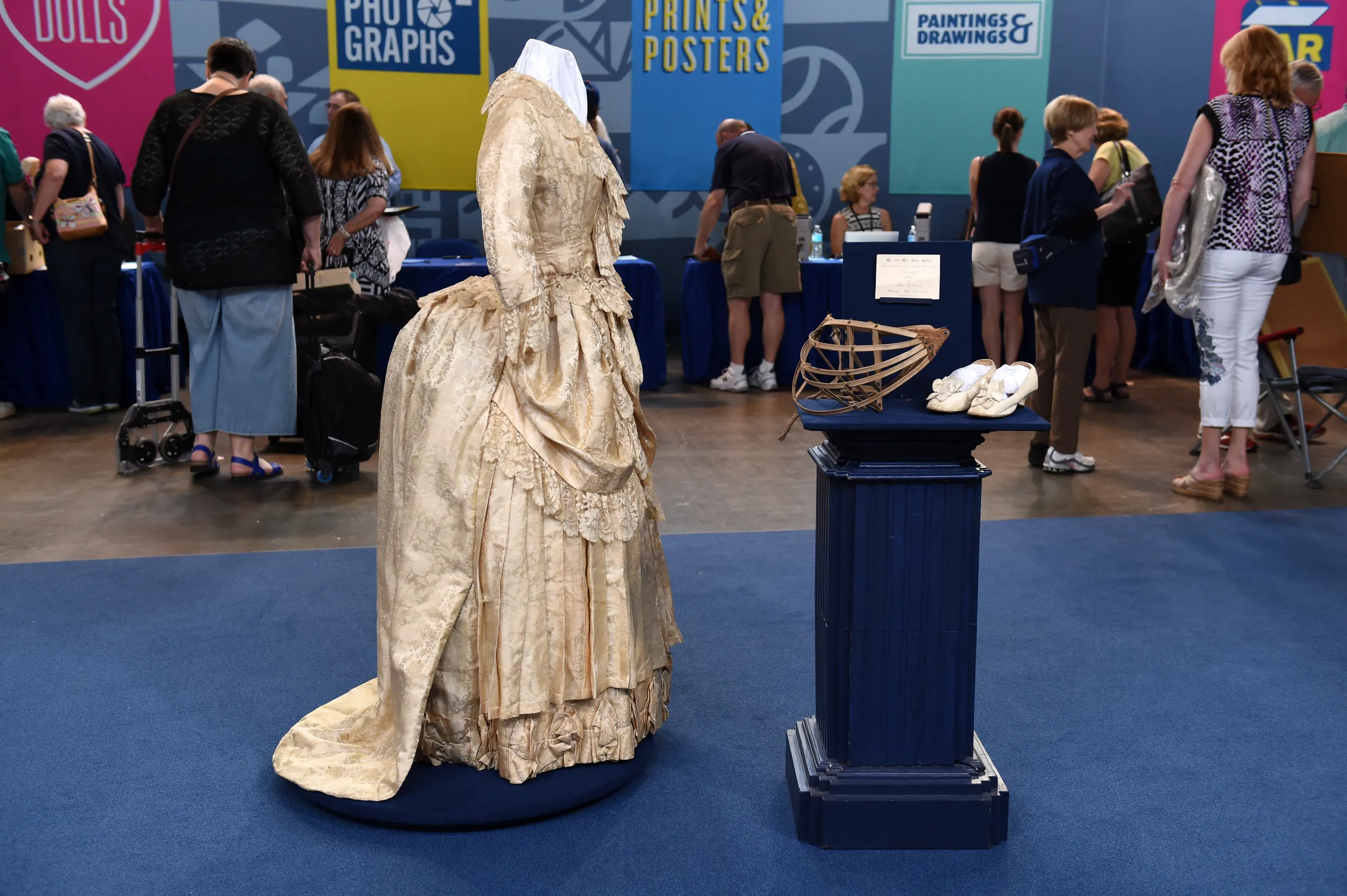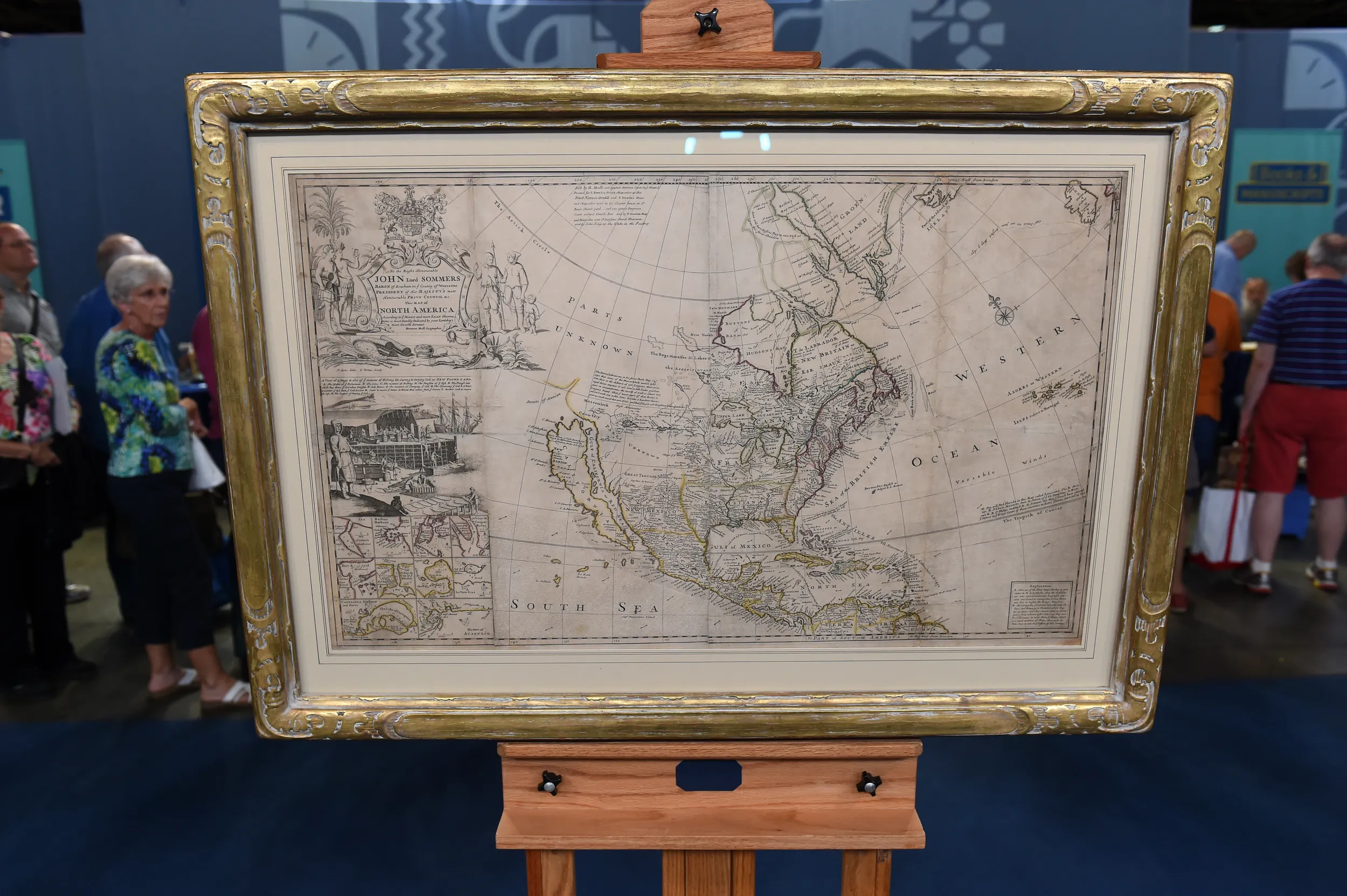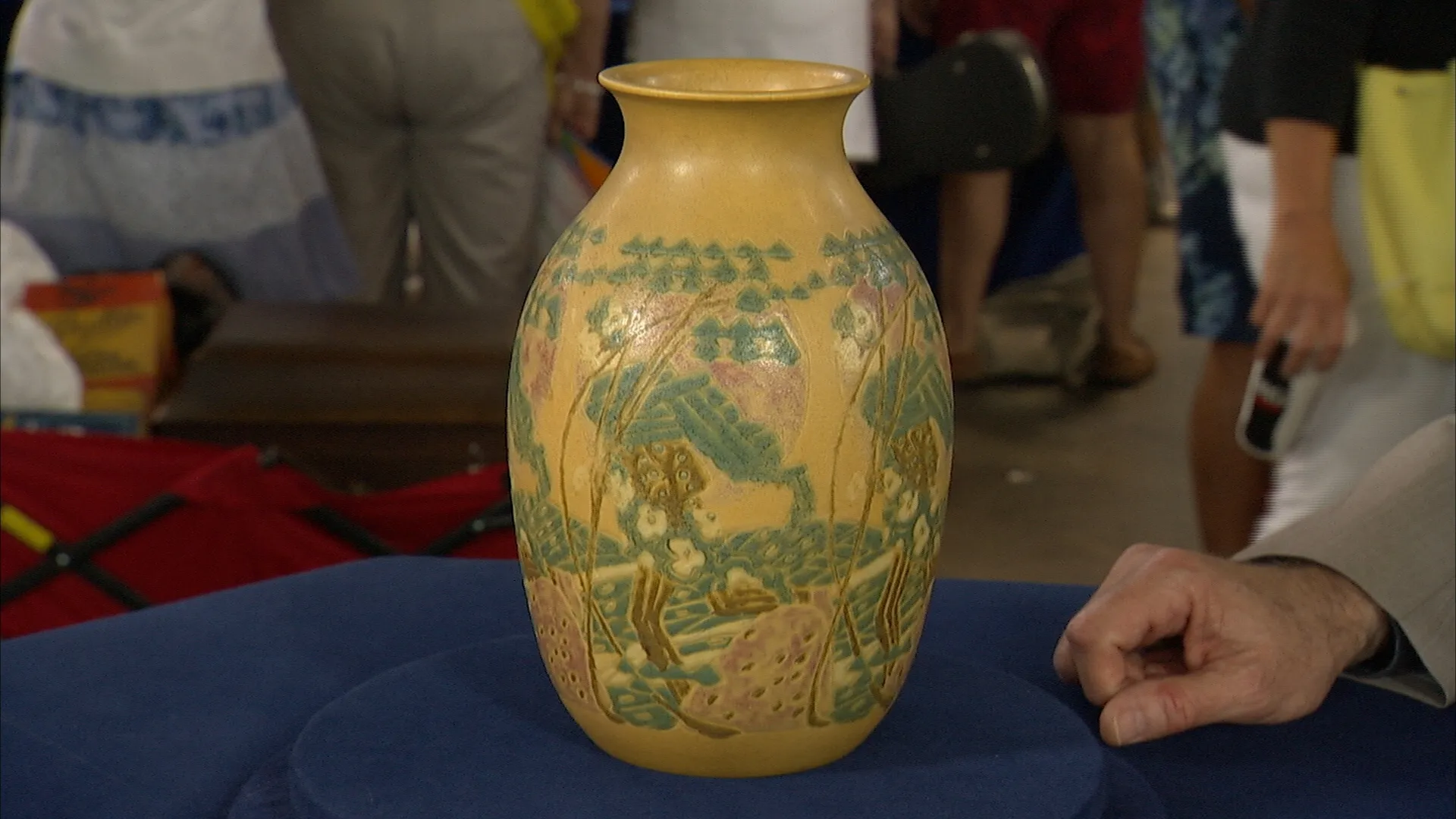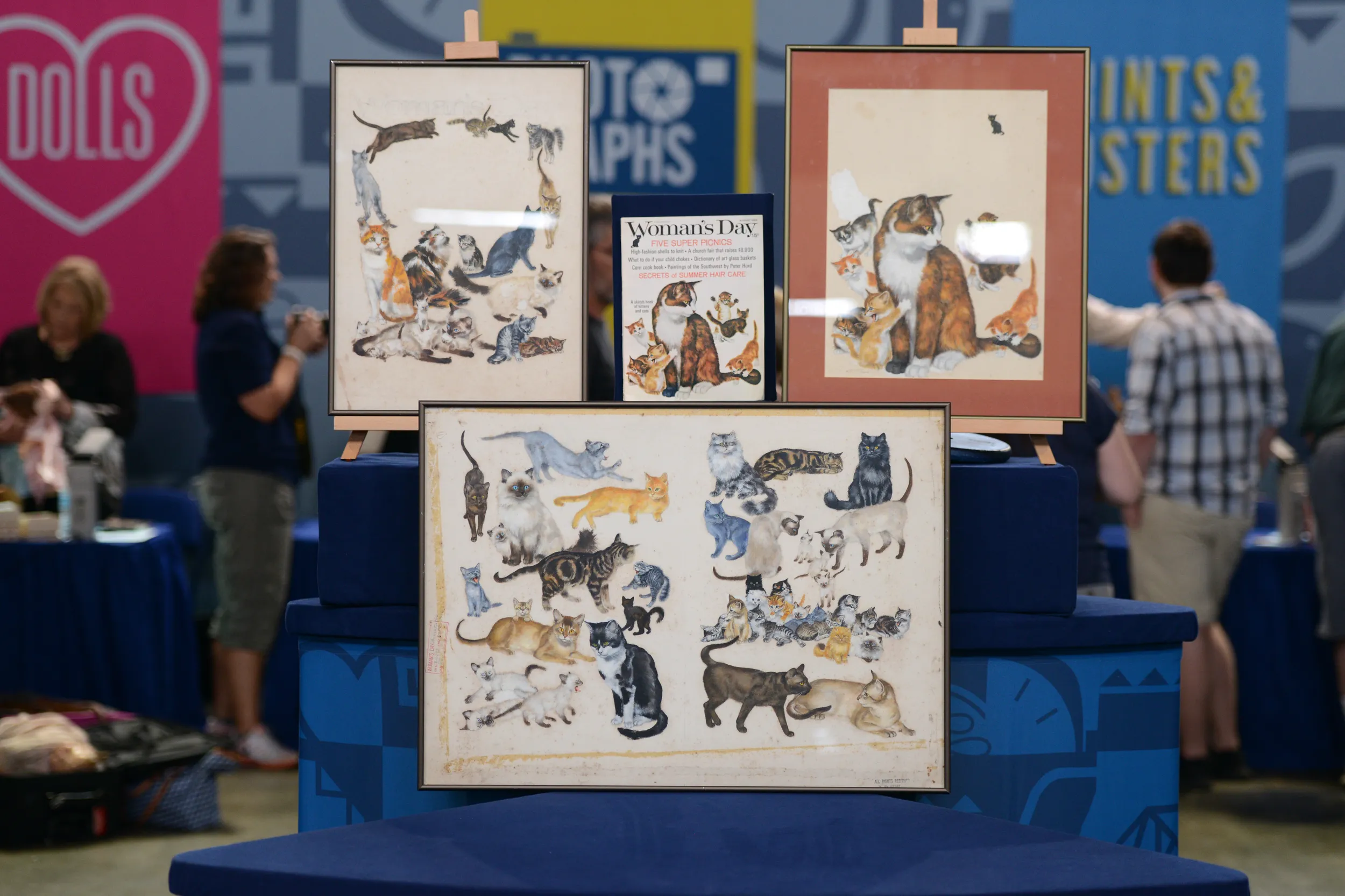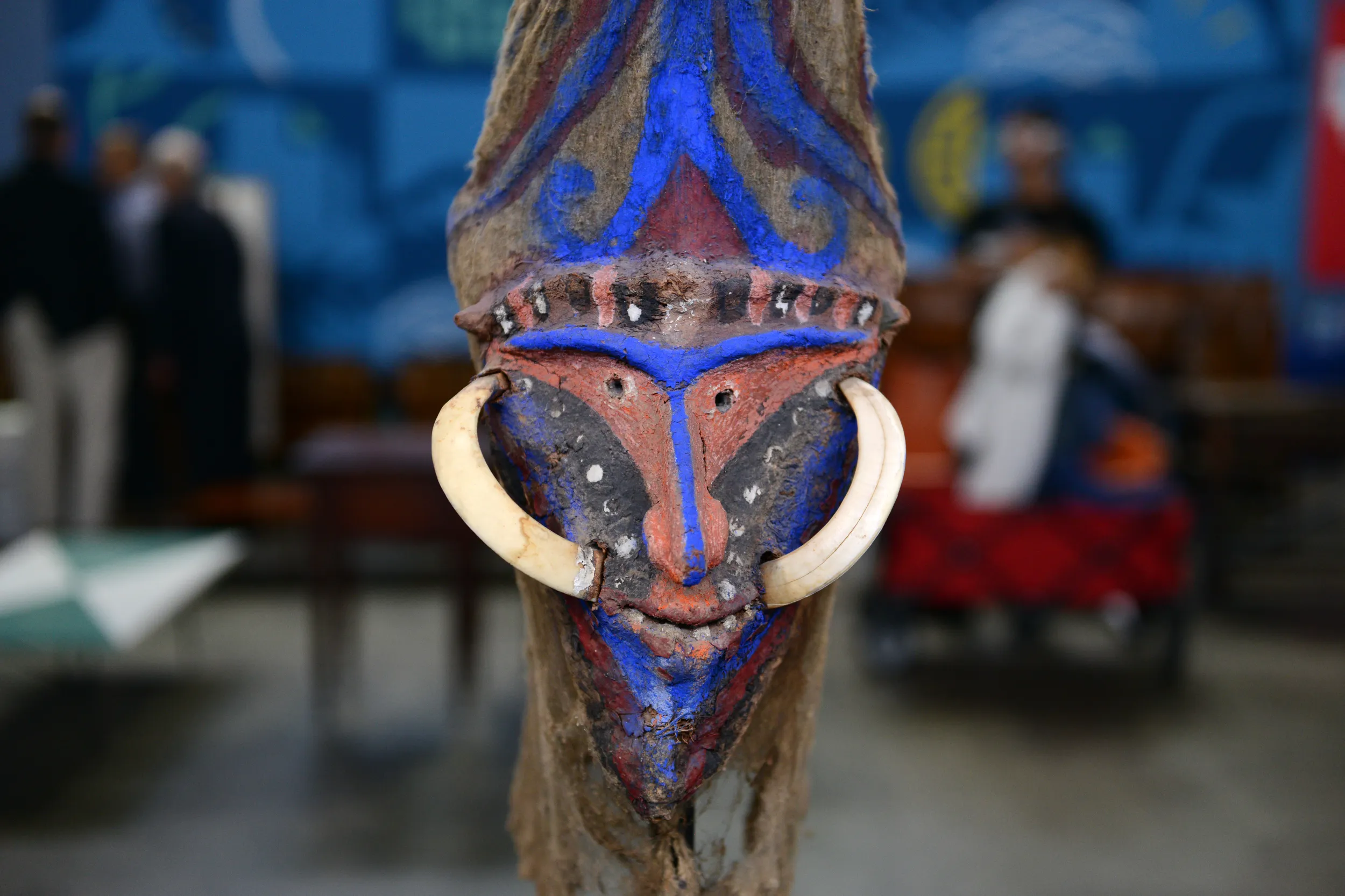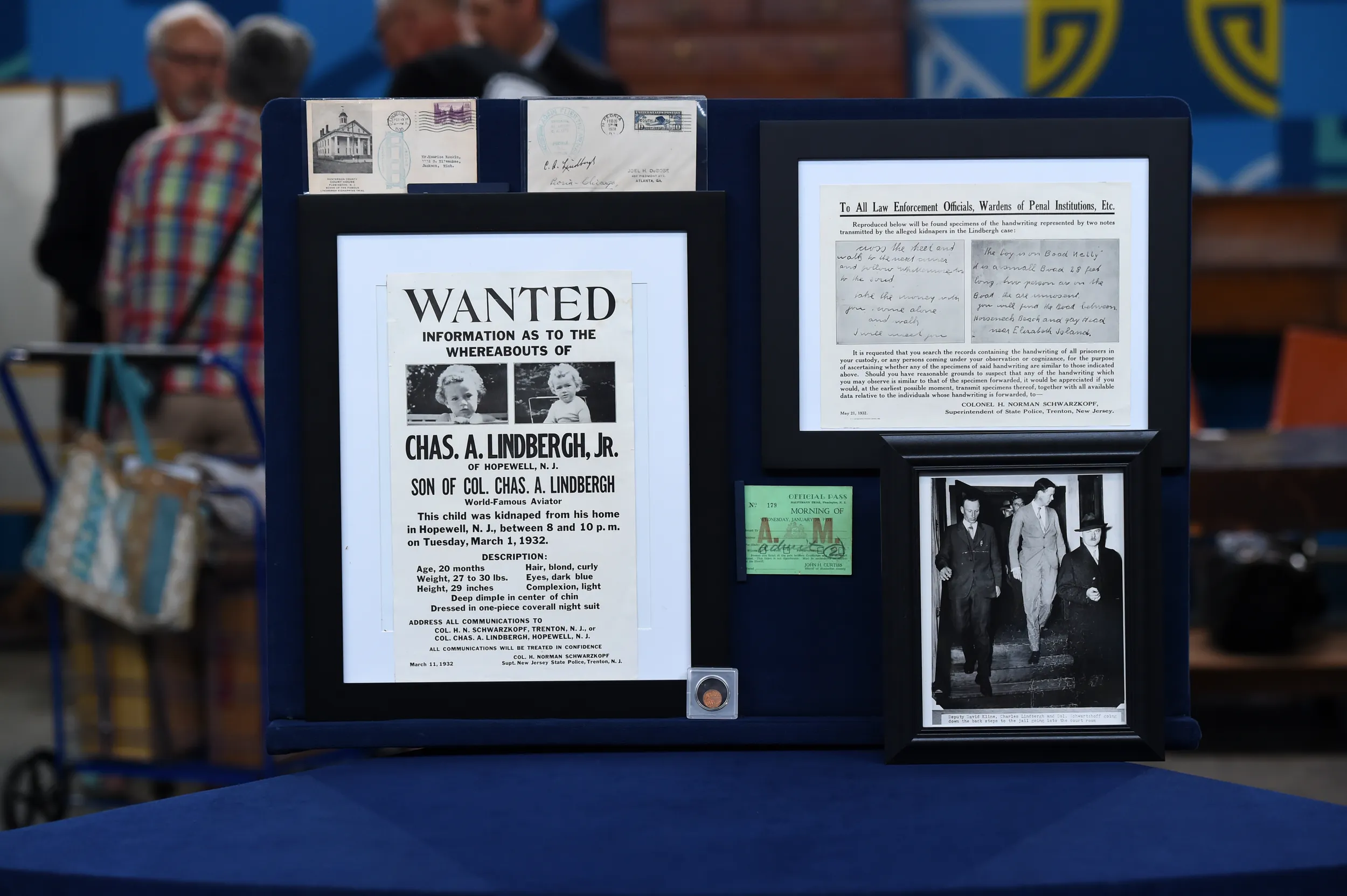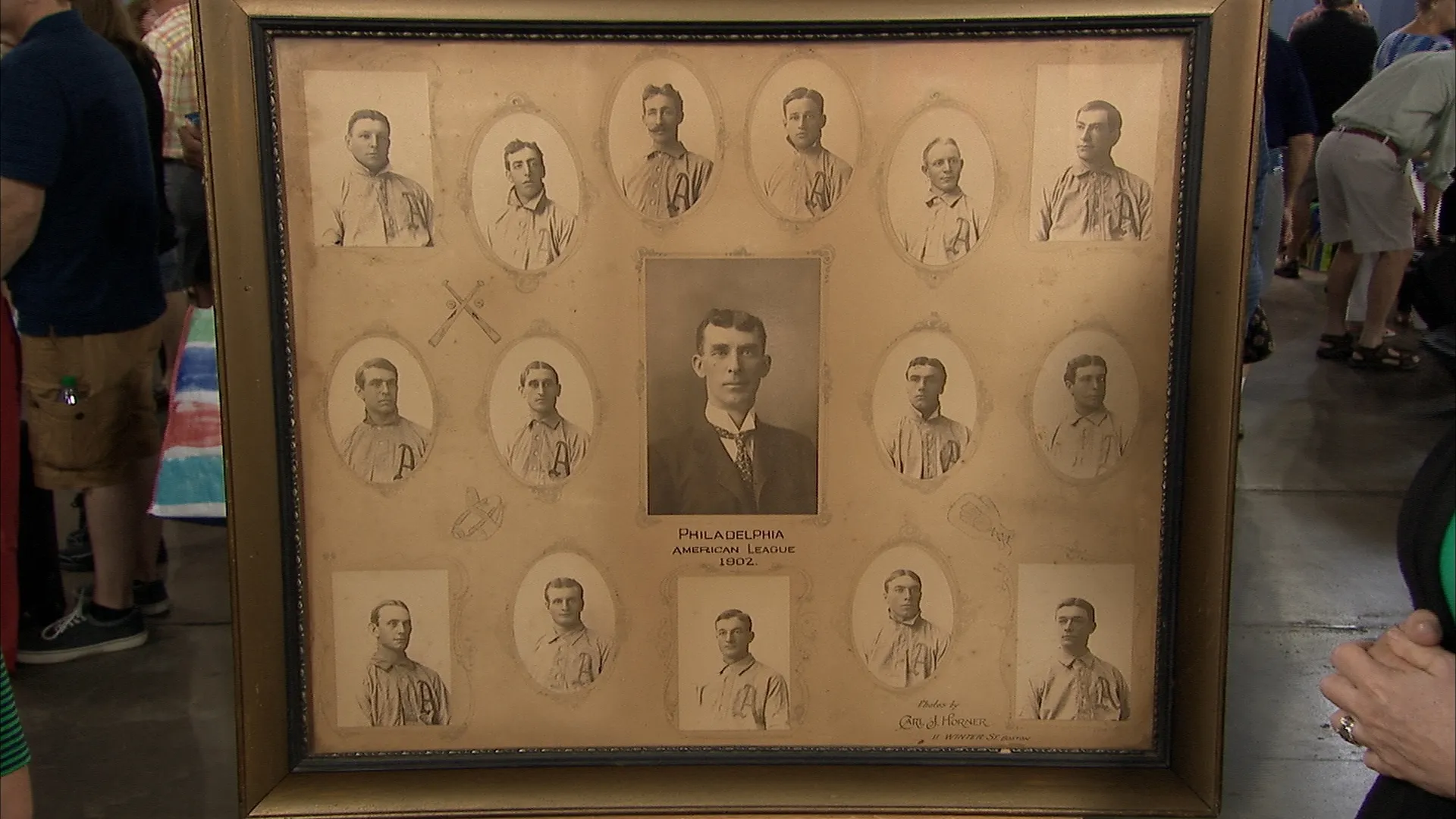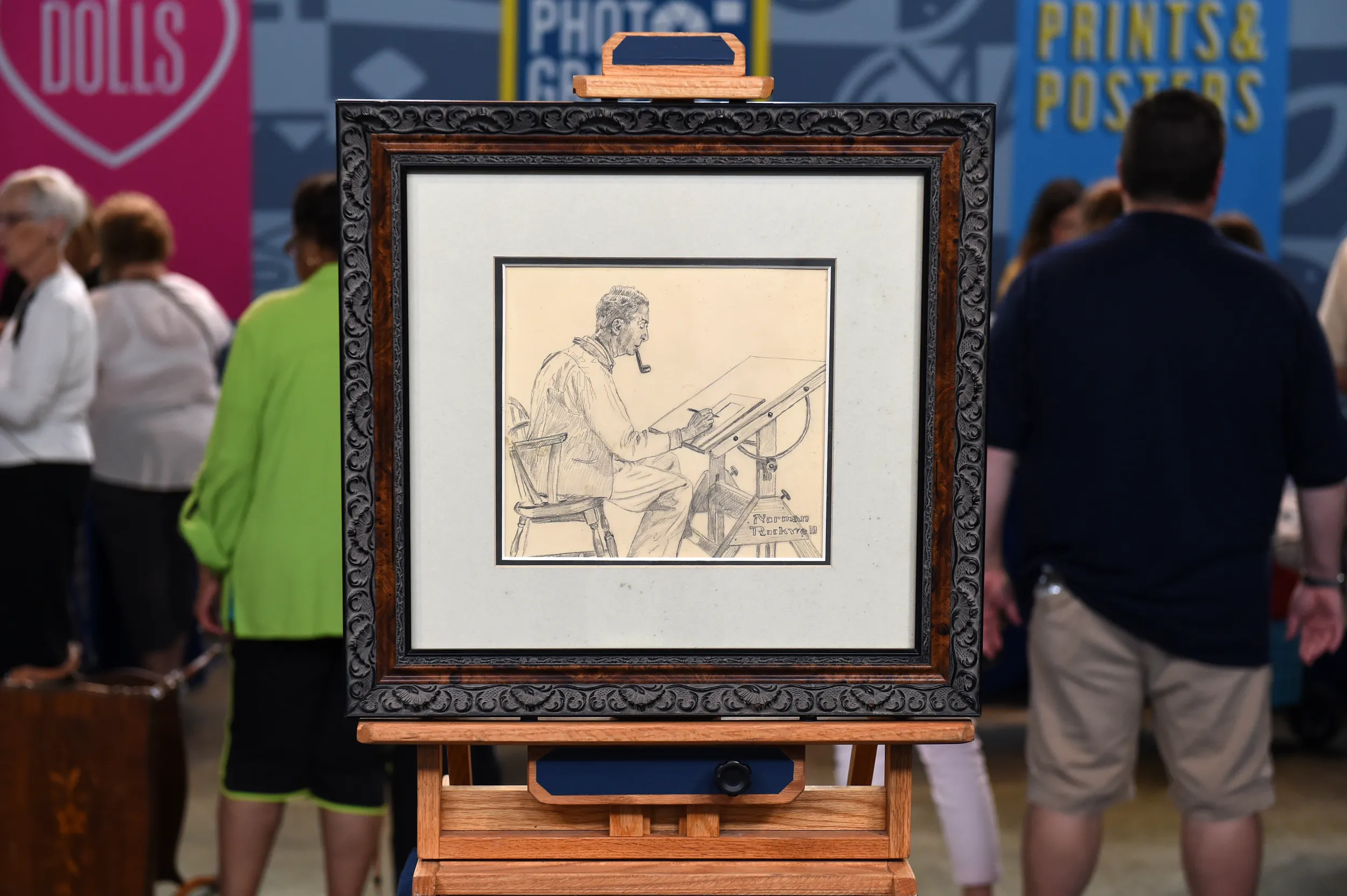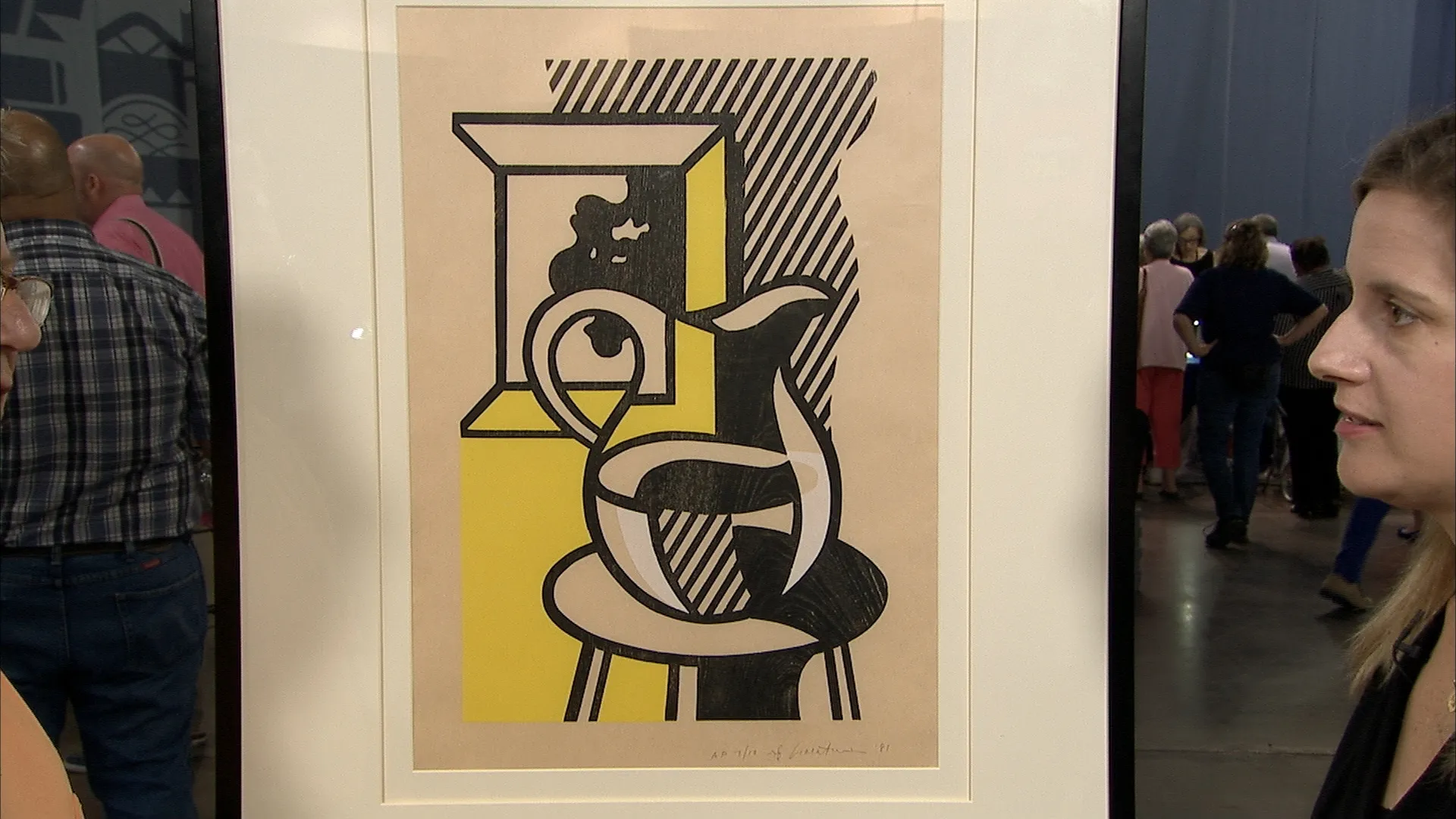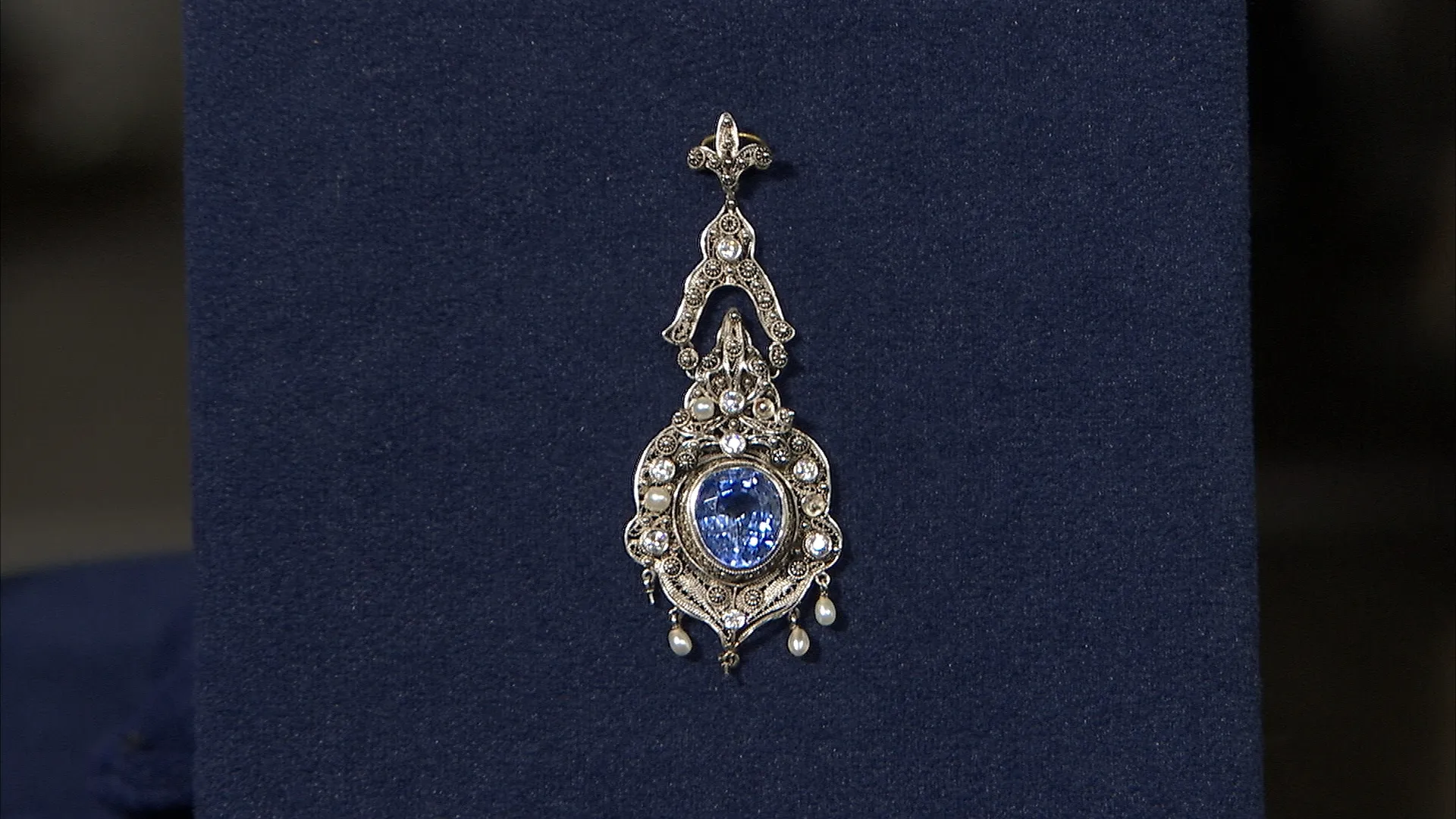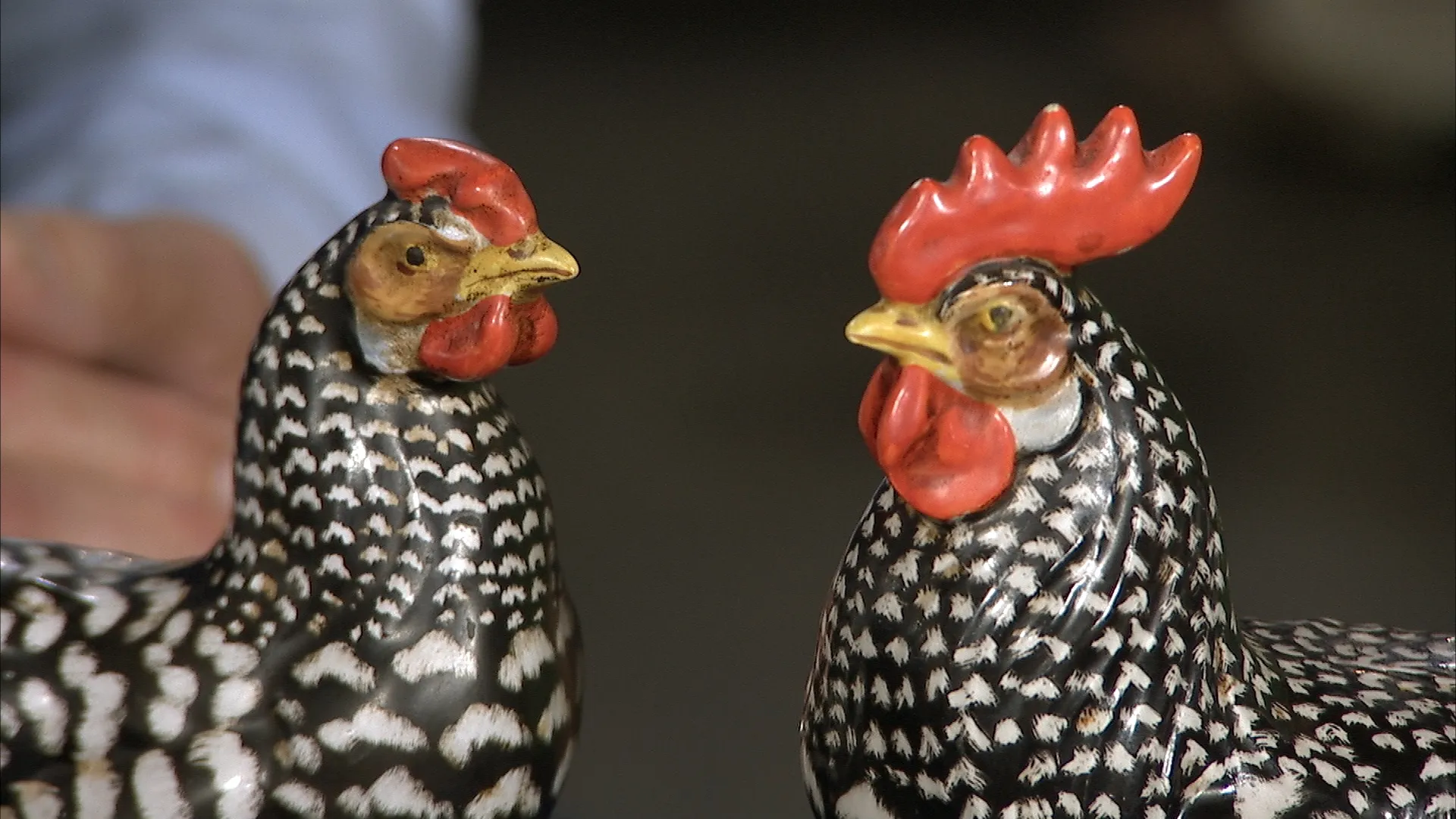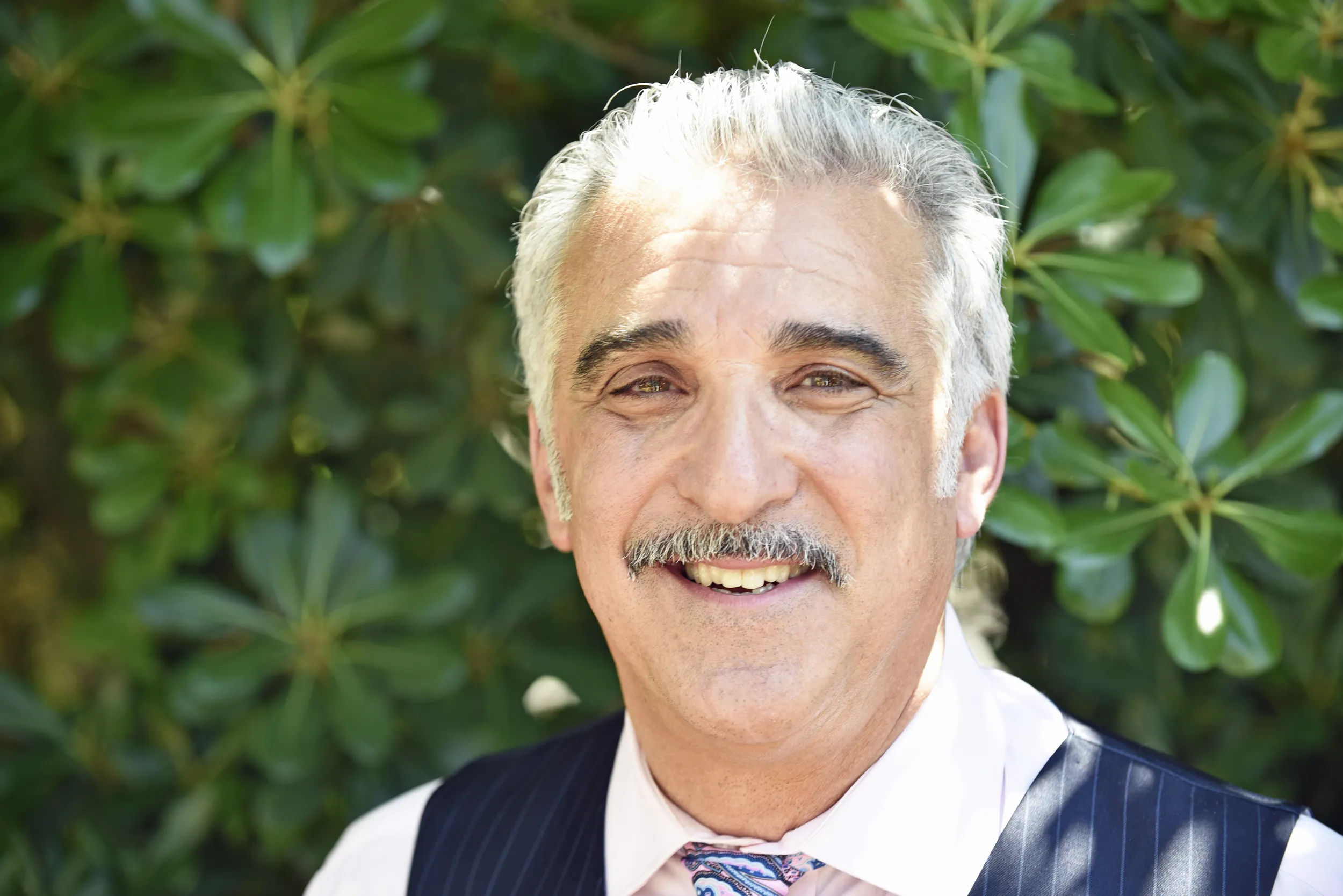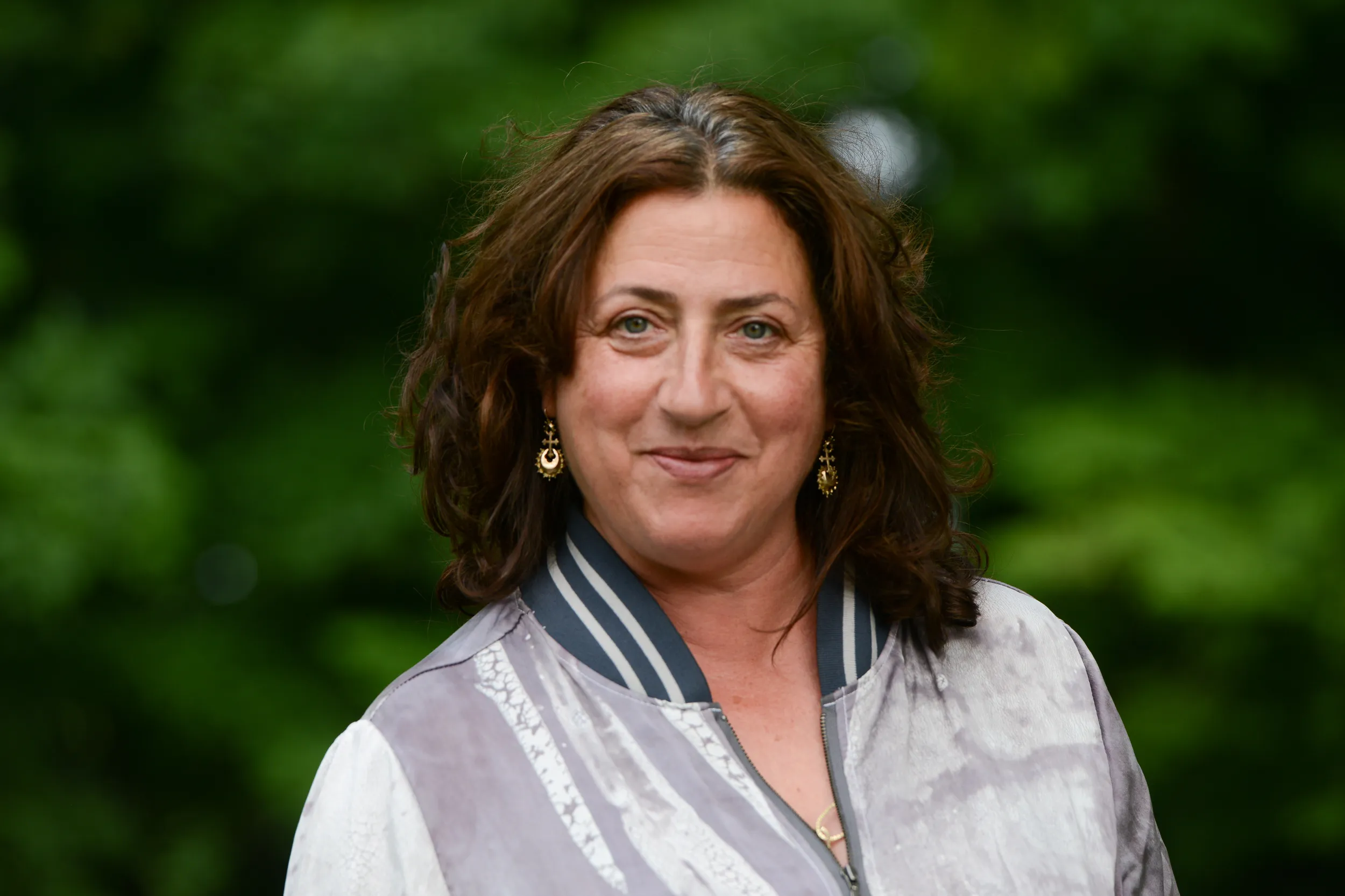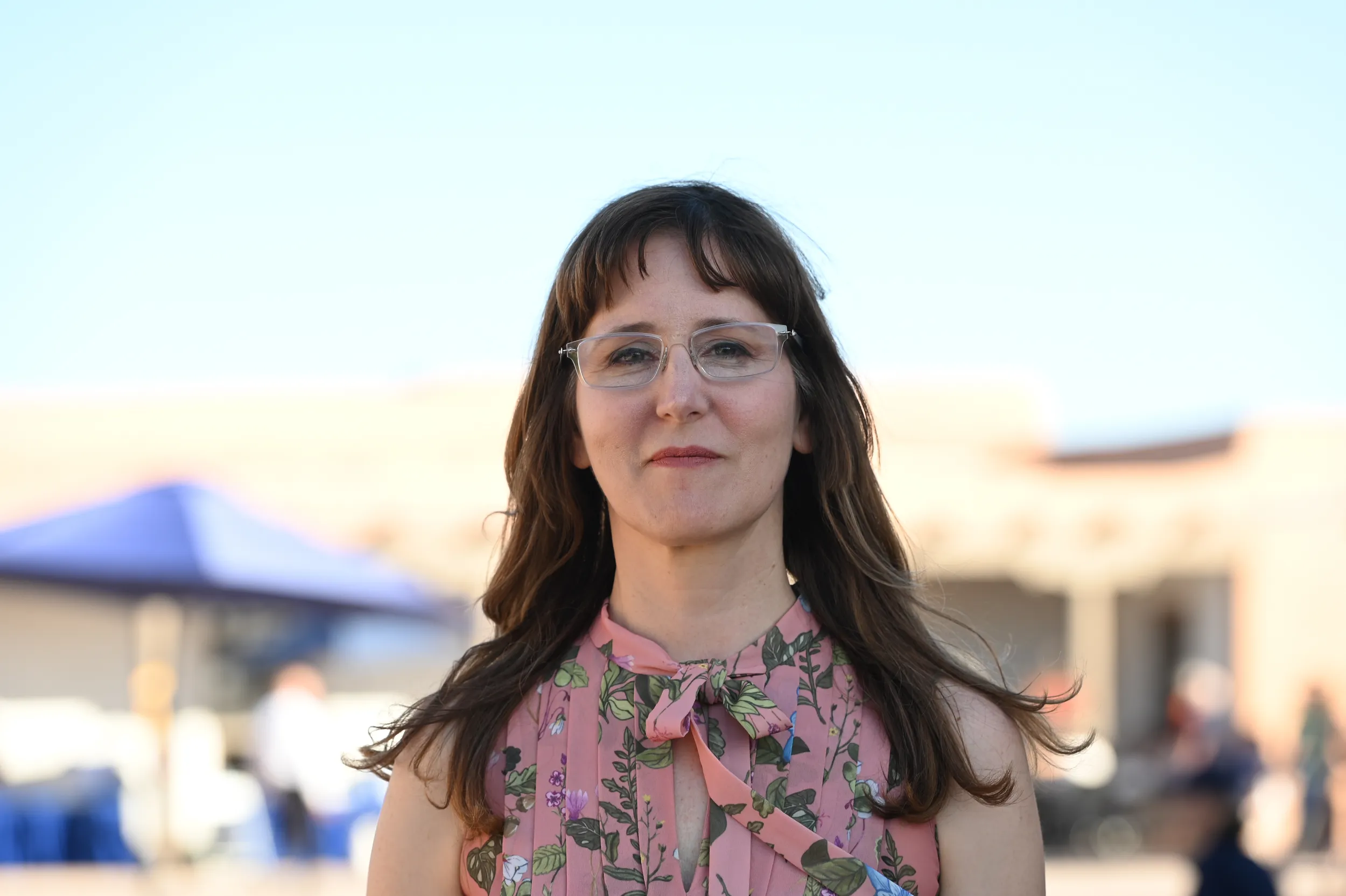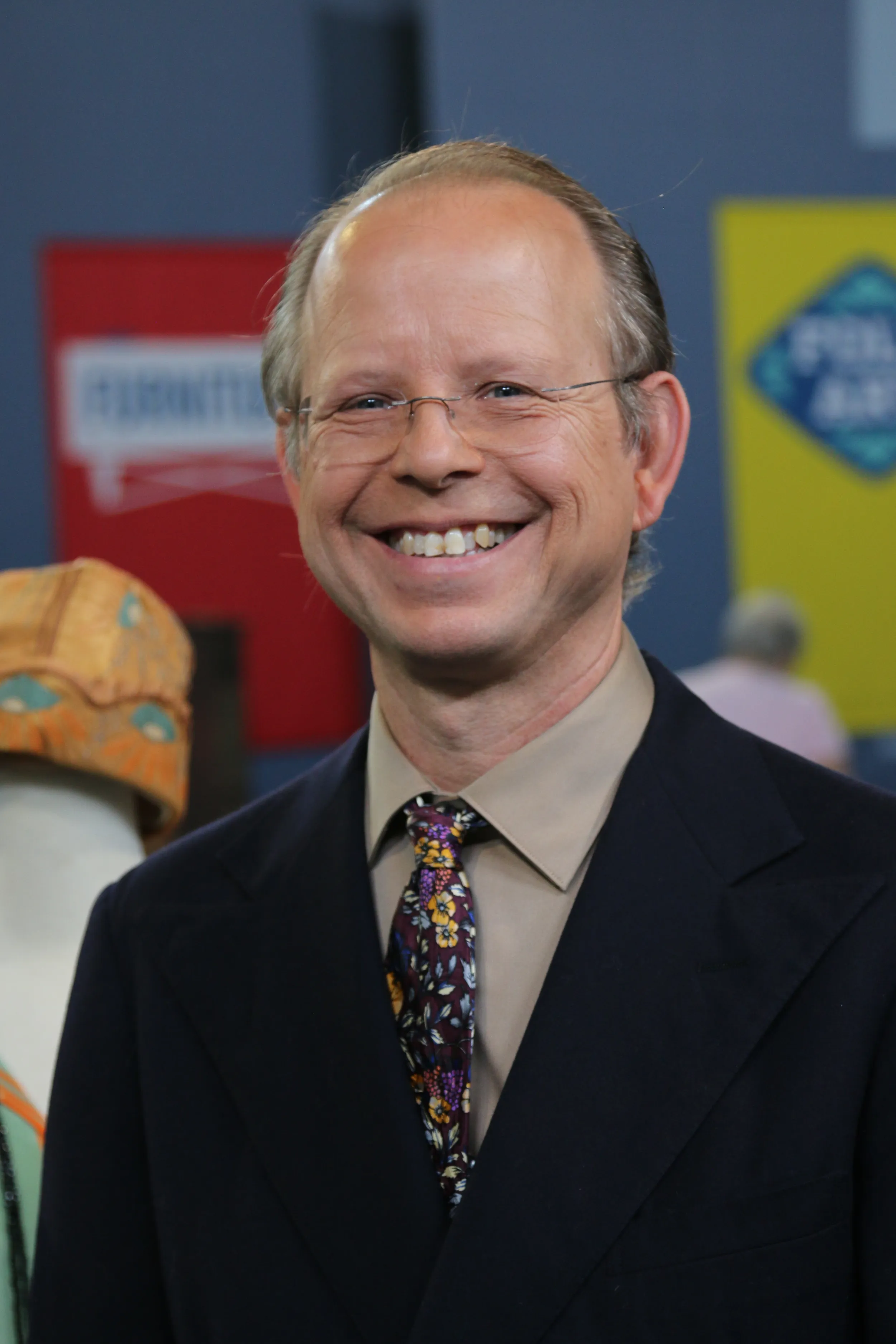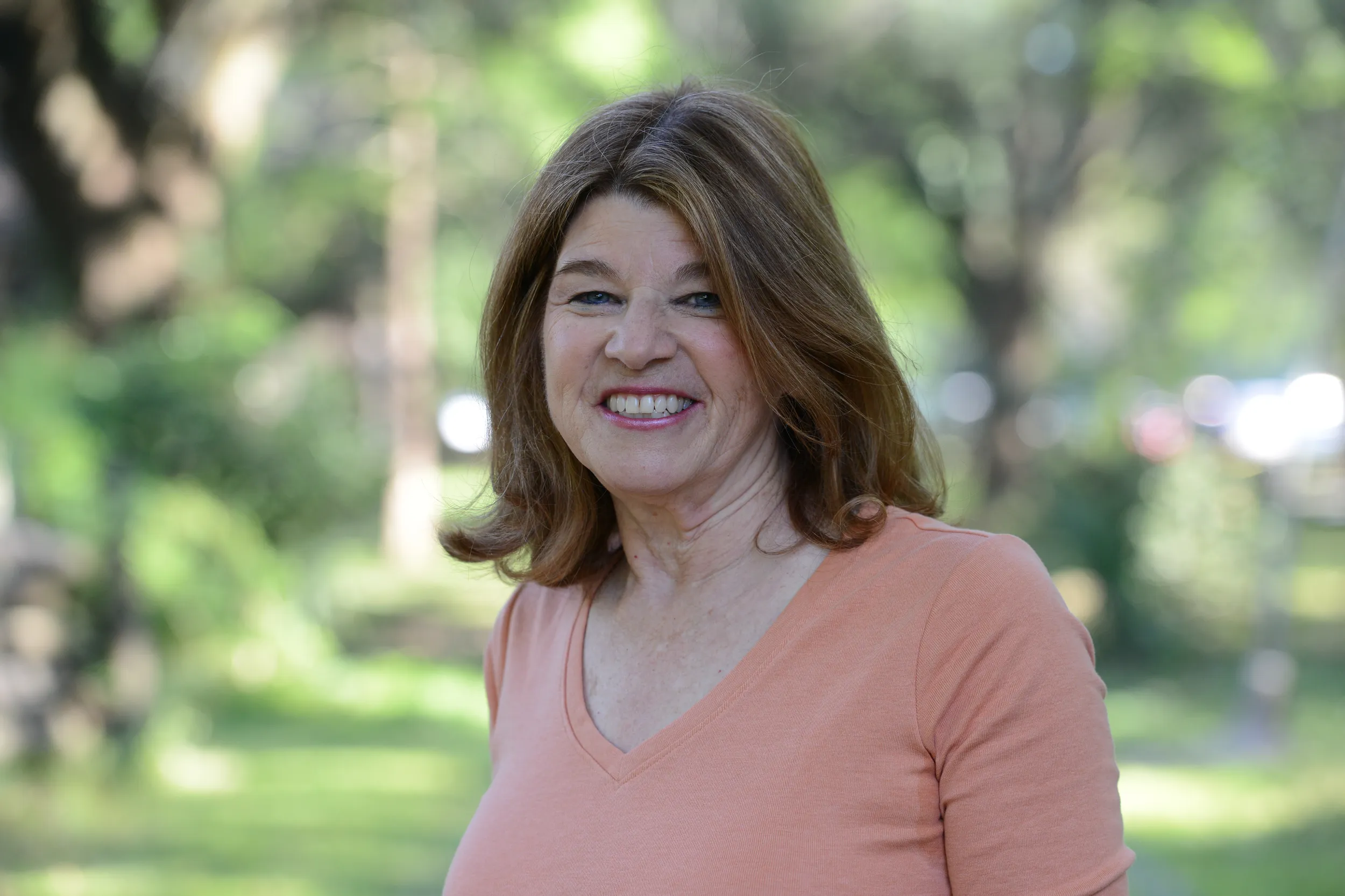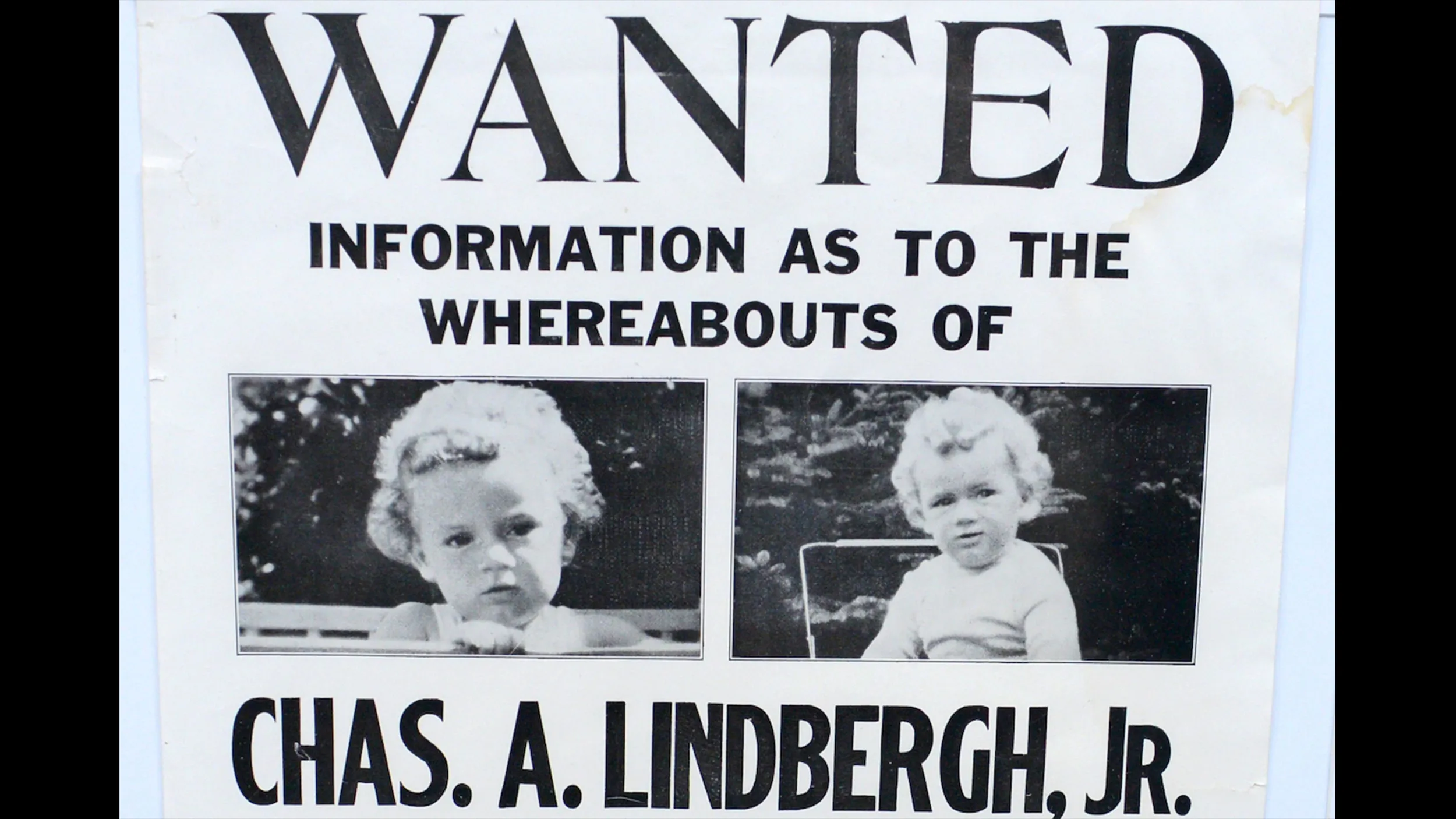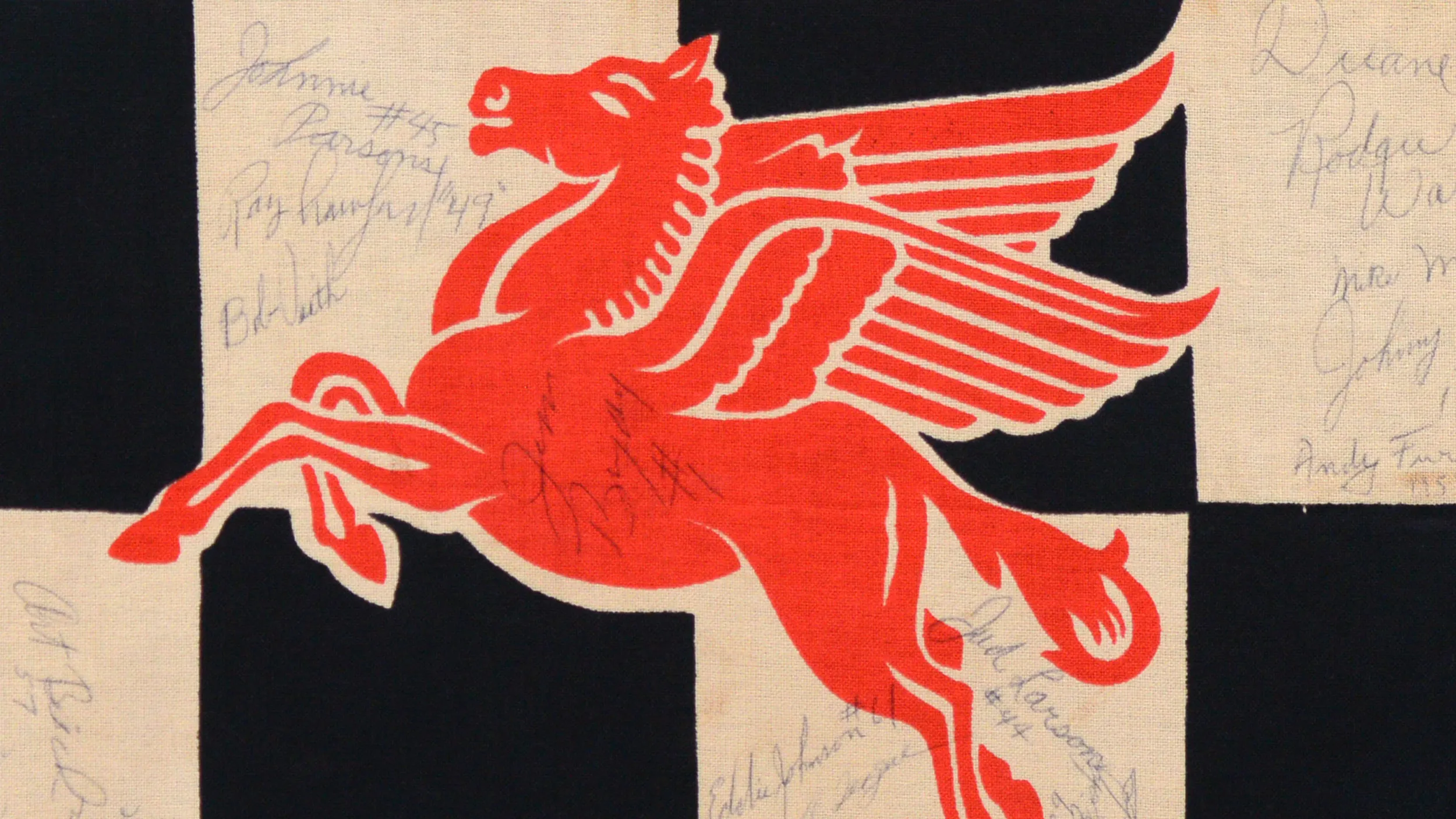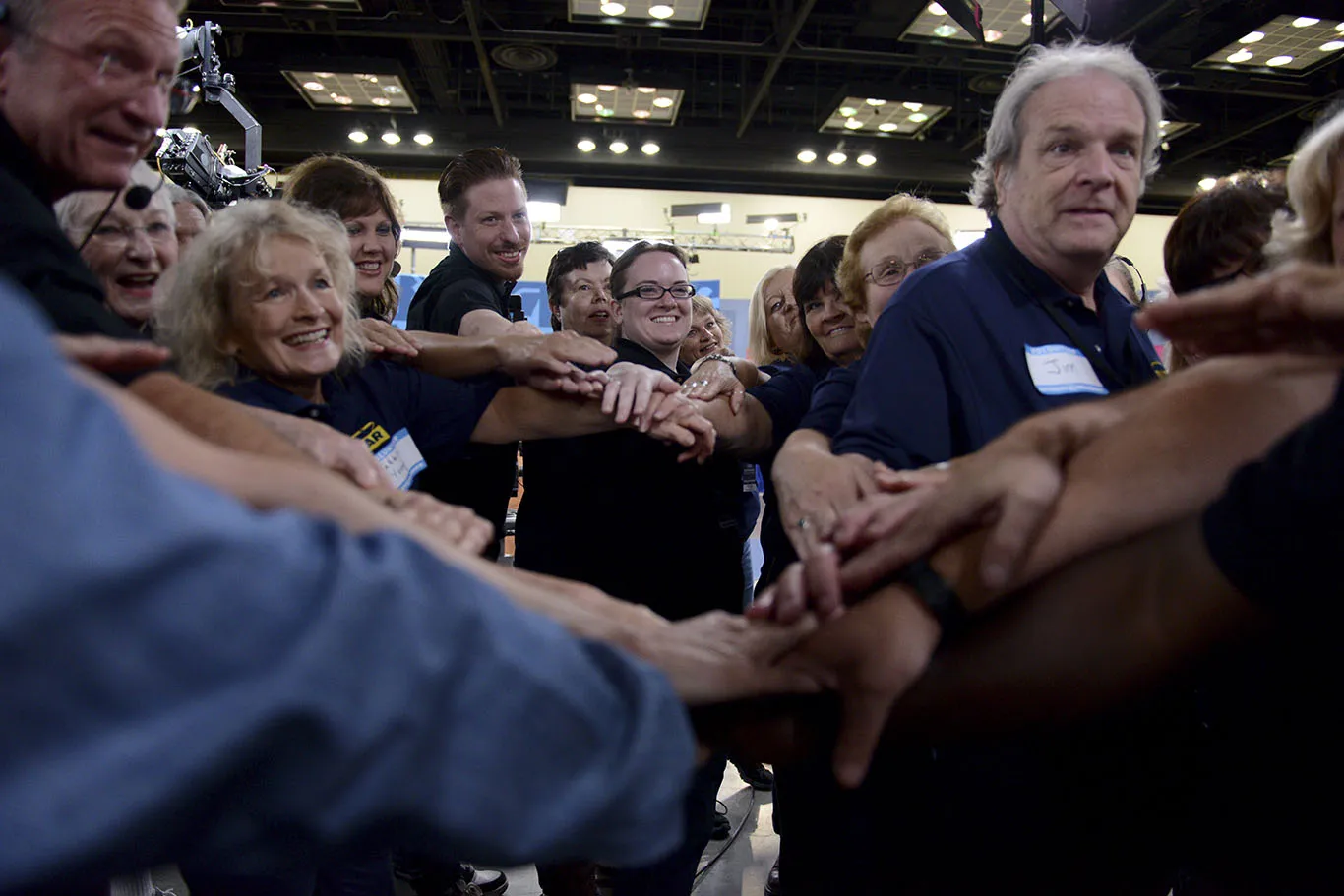HOST: ANTIQUES ROADSHOW has landed in Indianapolis, Indiana.
GUEST: I paid $2,000. We'll see today if I had more money than sense.
GUEST: Got my heart thumping.
(chuckling)
(laughing)
GUEST: Totally unexpected. Totally astonished.
HOST: You don't have to be a motorhead to recognize this famous home of American auto racing. ROADSHOW made a pit stop at the Indianapolis Motor Speedway, the Brickyard, and the museum where we ooh-ed and ah-ed over some beautiful antique champions. The ultimate Indy 500 prize? The iconic Borg-Warner Trophy, a sterling silver giant standing at five feet, four inches tall, and weight over 150 pounds. And look what turned up at ANTIQUES ROADSHOW. Check out this vintage treasure from the greatest spectacle in racing.
GUEST: I'm a speedway sparkplug. I grew up just a couple of miles from the Indianapolis Motor Speedway track. And all through my grade school and high school days, I listened to the cars in the early spring going around. This flag was signed by 31 of the 33 drivers in 1958 at the conclusion of the race. On the day of the race on lap number one, 1958, all 33 cars were headed down the back stretch on lap number one, and two drivers, Ed Elisian and Dick Rathmann, tried to reach turn three both of them at the same time, and it caused an accident that Pat O'Connor was killed in before they even completed lap number one. So that's what makes this particular year eventful, but tragic. And, of course, it was later won by Jimmy Bryan.
APPRAISER: Right. And we can only assume that this flag was probably started to be signed a day, two days, perhaps three days before, as we have Pat O'Connor's signature here. The only thing we can't figure out between any of us is how Jimmy Bryan managed to save the center logo for himself.
GUEST: Yeah, and to this day, I don't know. Maybe there's a listener out there that can explain why Jimmy Bryan got to sign the center spot. He was the winner, and it had to have taken place after the race, but yet we have a signature on there of one driver that didn't even complete the race.
APPRAISER: Right, and we've looked, and we don't see Jimmy Bryan in another spot.
GUEST: No.
APPRAISER: Sometimes what we'll see is we'll see the driver who wins on another spot, and then again in that center position after they've won.
GUEST: We've got 18 other signatures on here of people that were related to racing—racing dignitaries, former winners. So you've got 31 plus 18, that's the number of signatures that are on this flag. As far as I know, it's the only flag of its sort.
APPRAISER: Through your father's occupation, you got to meet a lot of these drivers.
GUEST: I did. My father had an accounting firm on Main Street. And so I grew up looking over the kitchen table, and my dad and maybe a couple of these drivers would be there. And they'd have a cold beer while they talked taxes. In 1956, I was in the soap box derby. I had to build my own car. And that year, Pat O'Connor came to our house to have his taxes done, and he brought Ray Nichels with him, his chief mechanic. And while my dad was doing his tax return at our kitchen table, I said, "Pat, I've got my soap box derby out in the garage. Would you like to come and see it?" And he said, "Sure." And he got Ray Nichels, chief mechanic, and Pat went out to my garage, and they said, "Looks really good, Jackie, but you've got to align the tires." And they spent time and they got my tires aligned, and I raced my car, and I got more speed out of it in the soap box derby because of Pat O'Connor.
APPRAISER: So tell me how you got it.
GUEST: A photographer by the name of Cooke had it. He passed away about 15, 20 years ago. An auction company had an estate sale, and I went to that hoping to get photographs. This came up for sale, and I bid on it and bought it.
APPRAISER: And how much did you pay for it?
GUEST: No records. I couldn't find the receipt, but I think around $1,000, maybe $1,100. And I'm just in love with it, I've kept it all these years.
APPRAISER: What would you think it's worth today?
GUEST: Oh, boy.
(laughs)
GUEST: Let's think big. Maybe $3,000 or $4,000? I don't know.
APPRAISER: Yeah, it's quite the special piece for you to have brought in today, especially being here in Indianapolis. I would put a value on this piece for insurance purposes of $10,000.
GUEST: (voice breaking) Wonderful, wonderful. Wow, I didn't expect that. Yeah, marvelous. Oh, my gosh. Well, it's a part of my growing up, and it'll be passed on to my son.
GUEST: I had acquired this crock almost 25 years ago at just a farm auction in southeast Ohio.
APPRAISER: This is a piece of American salt-glazed cobalt blue decorated stoneware. And you can see over here to start with, a little dropping. This happened the day it was fired in the kiln. This is a crystalized piece of salt. This cobalt blue decoration was done freehand. A lot of times cobalt blue decorated pieces were done with a stencil. But this was done with what they call a slip cup. So the liquid cobalt was put into the slip cup, and actually drizzled onto this stoneware piece. Can you imagine how difficult that was?
GUEST: Their handwriting's a lot better than mine.
APPRAISER: It is amazing. And, trust me, the guy that did this, he was the highest paid man in the factory because cobalt was expensive, and there was a lot of room for error. We see the "ten" there, pretty obvious this is a ten-gallon straight-sided crock. And we see a name: John H. Klippart. He was the secretary on the Ohio State Board of Agriculture in 1868. And then we see "from." So as soon as you see that, we know that this was a presentation piece. This was a gift. And it was given from a gentleman by the name of J.P. Alexander from Akron, Ohio. J.P. is Jay Park Alexander. He was a very wealthy, large manufacturer of American stoneware. And he served on the board at the same time that Klippart served on the board. He owned two oil wells, made a huge amount of utilitarian pottery, and shipped it in railroad car size. So he was a major, major producer, made fired bricks, won a medal at the centennial celebration for making fired bricks. What'd you pay for the piece?
GUEST: I must have liked it a lot that day. I paid $2,000.
APPRAISER: That's extraordinary, at a farm auction in Ohio 25 years ago.
GUEST: I was hoping for $50, but no such luck.
APPRAISER: And you went for it.
GUEST: I did. A couple of guys were standing there after the auction and they said, "Got more money than sense." So, I guess we'll see today if I had more money than sense that day.
APPRAISER: Well, this would appeal to a lot of collectors. American stoneware collectors, historical Ohio collectors would love this piece, and decorated stoneware from Ohio is extremely rare. So today we're going to put a retail value on this piece of $8,000 to $10,000.
GUEST: Wonderful.
APPRAISER: So I think your intuitive nature paid off.
GUEST: Wonderful, I appreciate it.
GUEST: It's been in the family for so long, nobody knows where it came from.
APPRAISER: Cute! I like him.
GUEST: We went to the Indy 500 track, and the museum actually is interested in some of these pieces, but we need to know what they're worth to be able to donate them.
APPRAISER: They're really cool. $30, $50 a sheet.
APPRAISER: It's a nice copper milk pail. It was almost certainly English. It's very much sort of Downton Abbey style. I can imagine seeing it being part of that production. In an antique store today, I would expect $400 or $500.
GUEST: I brought you my father's Rolex watch. It was something that we found in his estate sale. And I gave it to my husband and said, "Oh, you keep this safe." So we put it away.
APPRAISER: What did your dad do?
GUEST: He was a pipe fitter, but for pleasure he was also a diver.
APPRAISER: So that's how he got a diver's watch, I guess, then. As you know, it's a Rolex stainless steel watch. It's called a Submariner, the model. And this particular one was made in 1950.
GUEST: Oh.
APPRAISER: The dial is all original. We know the band has been replaced on it. But it has a special dial. It says meters first before the feet. They generally did this for the European market. In the American market they would put the feet first. It also has a special feature on it. The guards that protect the crown are pointed. So it's an earlier version of the Submariner, and it's a quite collectible model. I see you have the original box that has part of the paperwork still there on it. Did you have any idea of the value of the piece?
GUEST: I know that Rolexes are a fairly expensive watch.
APPRAISER: Yeah.
GUEST: So I was guessing about $500, maybe $1,000.
APPRAISER: Right, right. I would tell you that this watch in the market today, $12,000 to $15,000.
GUEST: No way!
APPRAISER: Oh, yes way.
(laughing)
GUEST: That is so not what I was thinking. Wow.
GUEST: I brought what I believe to be a child's carriage or pram. I purchased this from a farmer in my hometown a couple years ago, and I love old things, unique things, fell in love with it, and it sits in the corner of my living room.
APPRAISER: All right. This is made about 1870 or so.
GUEST: Okay.
APPRAISER: It's made probably in New England. There was a company called Joel Ellis, who made doll carriages and, to a lesser extent, baby carriages. They were in Springfield, Vermont. And this has a lot of elements that would relate it to especially doll carriages made by Joel Ellis.
GUEST: It wasn't for dolls, I mean...
APPRAISER: It wasn't for dolls. It's too big. A doll's carriage tends to be maybe a third this size. This is a baby carriage, and what's remarkable about it is the condition that it's in. The leather top is likely the original one, the tasseling is all original. The upholstery on the backrest and the seat is probably an early replacement, but probably from the late 19th century still. The best part about it is the decoration. It's painted by what would be generally termed a decorative painter. He would do Victorian flourishes and things like that. This is the kind of item that would get a great deal of use and would tend to be subjected to a great deal of wear. And even in some of the places where the wear is most, you still see some of the painted decoration, which is really remarkable. You said you bought it from a local farmer; what did you pay?
GUEST: $175.
APPRAISER: I think that because of the condition that it's in, I would place the value for insurance of $1,500.
GUEST: Wow. That's wonderful.
APPRAISER: It's one of the best ones we've seen.
GUEST: That's wonderful.
GUEST: I brought out part of a collection that's been in my family for generations. My great-great-great-grandfather was a officer in the Civil War, and he started out in the 67th Ohio Volunteer, and then mustered out of there and went into the 5th U.S. Colored Infantry. Here are a number of the letters that he wrote to my great-great-great-grandmother while he was at war. And it's part of a larger collection.
APPRAISER: We all know that the Civil War was a major turning point for the beginning of the modernization of race relations in the United States. Obviously at this point we're now fighting a war to emancipate African Americans. One of the things that went on during the course of the war is the Union decided that it was absolutely necessary both in terms of manpower and also from the purposes of helping to understand the reasons we were fighting the war to have African Americans serving in the military to help fight for the freedom of other African Americans. And it became an opportunity for a lot of officers to move up in the ranks. One of the things that your memorial shows is that he was a second lieutenant, and then a first lieutenant with the 67th Ohio. But when he moves over to the 5th U.S. Colored troops, he's a captain. And now he's commanding a company. One of the fabulous things about your archive is the content of the letters. Some of the letters talk about the change in attitude from the beginning of the war to later in the war amongst the troops. What did you say you read in some of these letters about that?
GUEST: To preface it, I think that maybe Gustav had a different perspective. He was born in Germany and came here when he was 14 years old. He spoke very highly of his black troops. He thought them very brave and honest, good men. And he felt like they were always going to fight as hard as they could.
APPRAISER: There's a point in the letter where he talks about the attitude of the white troops changing. Not all of them were supportive of African American troops serving alongside them. But after they proved themself in battle, all of a sudden they were glad that they were there. For any historian of the Civil War, one of the most crucial moments is the Siege of Petersburg, where Lee's army is finally trapped, and Grant is going to defeat him. One of the things that they tried to do to break that siege was they set off a giant mine. It was a giant explosion to destroy some Confederate earthworks and try to break through the line. This became known as the Battle of the Crater. And he wrote an eloquent letter describing that. For a collector of letters, that's the kind of battle content you want. Firsthand account, written the day after the battle. It's amazing stuff. Unfortunately, hundreds of troops were killed. Thankfully for the troops under your ancestor's command, they were in reserve and they didn't get trapped in the crater. Usually these kind of things are pre-printed and filled in, and they got them at a veteran event or something like that. A hand-painted one is certainly unique. The pre-printed ones have minimal value, $100, $200. The painted ones typically are a couple of hundred dollars to $400. Because this is U.S. Colored Troops, and has a whole different perspective on the war, and right now I would say because of the wonderful content of the letters in conjunction with this memorial, realistically, an auction value of $3,000 to $5,000 for the entire archive is not unreasonable.
GUEST: Mm-hmm.
APPRAISER: And it could actually bring even more.
GUEST: I ended up bringing my ring that was my grandmother's that I got in 1999. And it just pretty much stays in my jewelry box most of the time. And she got it from her sister, whose husband was an estate attorney in Chicago. So they think that's where it came from. That's all I know about it.
APPRAISER: The first thing that you notice right away is this material here of the carved face. So that's made out of coral. And what we know is that this ring is Victorian.
GUEST: Okay.
APPRAISER: In the Victorian period, which spans the time period from about 1837 to 1901, you see a big use of coral in jewelry. But especially this very high, deep relief. You might see a shell cameo that's much lower.
GUEST: Yes.
APPRAISER: The ring is made out of 18-karat gold. That's why it has this nice, rich color in the gold.
GUEST: Okay.
APPRAISER: 18-karat gold is about 75% pure gold with the other alloys. In the Victorian period in 1840, Prince Albert gave Queen Victoria a snake and emerald ring. Whatever she did, whatever she wore, all the women of the time were watching and followed suit, fashion-wise. So she was a very big influence on fashion. And here you have a ring right out of that period, although I think this ring was probably made in France. There's no hallmarks inside.
GUEST: No.
APPRAISER: There's nothing to go by. Over here you see some white metal.
GUEST: Mm-hmm.
APPRAISER: That's platinum.
GUEST: Okay.
APPRAISER: Very early use of platinum. And there's two little cabochon emerald eyes.
GUEST: Yes.
APPRAISER: And then you have some tiny accents of European-cut diamonds. The diamonds, in total, there's about a quarter of a carat.
GUEST: I was just curious as to if it was costume jewelry or not because she wore a lot of costume jewelry.
APPRAISER: Oh, did she, yeah?
GUEST: Yeah.
APPRAISER: Well, it's most definitely not costume jewelry. At auction, I would say that this ring would be in there for $2,000 to $3,000.
GUEST: Wow. So most definitely not costume jewelry.
APPRAISER: No.
(chuckling)
APPRAISER: Have y'all ever had it running?
GUEST: Yes.
APPRAISER: Good.
GUEST: And then we stopped it from running because it woke us up.
(laughing)
APPRAISER: The new clocks today a lot of times have a feature where they can go silent at night.
APPRAISER: I wouldn't have said this is abstract expressionist because you can see all the figurative elements of it. This is based on a still life. But I like it, it's very painterly.
APPRAISER: They're Lakota moccasins. They're a little boy's. They're in great shape, $1,200 to $1,800 pretty easily.
GUEST: Oh, really?
APPRAISER: Yeah. They're very nice moccasins.
GUEST: Thank you.
GUEST: It belonged to my first husband, and we were married in 1978. And as long as I can remember, we've had it. I believe it probably came through his family. They can trace their roots all the way back to Fort Boonesborough in Kentucky.
APPRAISER: And what do you think it is?
GUEST: I've always thought it was a pestle.
APPRAISER: And from where?
GUEST: That I don't know.
APPRAISER: Kentucky?
GUEST: From Kentucky, yeah.
APPRAISER: Okay. It's from Hawaii.
GUEST: From Hawaii.
APPRAISER: It's from Hawaii.
GUEST: Oh, my goodness.
APPRAISER: And it's called... generally they're called poi pounders. They use the poi, and they grind it, and it's a food in Hawaii. They come in all sorts of sizes. There's a larger one than this, which is basically the masher in the beginning, which really does the hard work for it.
GUEST: Okay.
APPRAISER: And then you get down to this one, which is the more sort of getting to the end. They're made out of this volcanic stone.
GUEST: Oh, my goodness.
APPRAISER: Very ergonomic shape. It's absolutely perfect. It fits perfectly in the hand, and then they would just go about mashing it from side to side like that. It's got wear on the side of it. This one has definitely been used. I would say with the wear, it's probably early 19th century. A retail price for this would be in the region of about $1,800 to $2,200.
GUEST: Wow. Yeah. I had no idea. And all this time we thought it came from Kentucky.
(laughs)
GUEST: I was told when I purchased it that it was jade. But I never had that confirmed, and I've always wondered. I purchased it at an auction about ten or maybe a little more than ten years ago. And at the time it was sold for jade. I paid about $50 for it.
APPRAISER: One of the first things that attracted me to it is the shape. This kind of sloping side, circular outline vessel is not a normal kind of shape you run into in Chinese art, and this is Chinese.
GUEST: Okay.
APPRAISER: In jade forms. It's kind of a bowl, but it's got three supports. And each of those supports have stylized lion mask, monster mask heads on these little, squat feet. They're absolutely terrific. The bulging eyes and the fearsome kind of face, and then these little, short legs. So I'm going to turn it over because we would love to see right here in the middle, I'd love to see right there a mark. But guess what's not there.
GUEST: No mark.
APPRAISER: There's no mark. But we can see that the bottom of the feet are really well defined. And then aside from that, as we look on the side, there's subtle indications about the stone. So right here you can see this veining.
GUEST: Yes.
APPRAISER: Now, jade comes from different locations in China, and there are different levels of quality and color. And this pale green color we have associated with mid to late 18th century design, but you also have that same kind of color present in early 20th century objects. And the shape is also interesting because, again, it's got the sloping side, but you'll notice that the rim here is fairly thin. Beautifully cut, beautifully hollowed out. It's a little on the thin side, which is something that you associate potentially to the 18th century, but also potentially in the early 20th century. There happens to be forms that exist from the 17th century and 18th century, even into the 19th century that approximate this shape. They were used as censers. And as a censer, you'd put sand in the base and incense sticks on it. But it's an unusual kind of shape. A conservative dating would be from the first order of the early 20th century. But I could argue that it could be from the late 18th, early 19th century. But it's inconclusive, and I think a conservative number is going to be in the range of $15,000 to $20,000. And that would be at auction.
GUEST: I'm astonished. (laughing) Totally unexpected. Totally astonished.
APPRAISER: Let's pretend that I could prove that it was to a period such as the Jiaqing period, which was an emperor that followed the Qianlong emperor, so 1796 to 1820. If it were from that time period, then I think you're probably looking at a value that's more in the $50,000 to $80,000 range.
GUEST: That is incredible.
APPRAISER: At auction.
GUEST: That is incredible. It's such a shock, truly. Brings tears to my eyes.
GUEST: Well, I bought it maybe 12 or 15 years ago at an auction. Was thrilled to find that I had all the extra things to go with it, including an invitation. And I discovered that the bridegroom came from northeast Ohio. I bought it at an estate auction. It was just thrown in a box with all the extras that went with it, and I paid $125 for it.
APPRAISER: The invitation dates 1883.
GUEST: That's right.
APPRAISER: The wedding was performed near Cleveland, Ohio, so the gown was probably made by an accomplished seamstress near there. It's a beautiful wedding gown. And it's created in two pieces. We call a dress or a gown today a one-piece ensemble, but back in the day in the 1880s and before that, they called a dress a two-piece ensemble. Usually was a bodice and the skirt. This one is made of a beautiful silk printed fabric, which was made here in America. It's accented with beautiful scalloped silk lace. All around the bottom you see pleating and extra detail. It's in almost flawless condition. There's a little bit of damage to the lace that could be repaired. It's from the period we call the bustle period, which is the 1870s and 1880s. And I'm going to turn the mannequin because you can actually see what the bustle does to the figure. When a woman got dressed, she would have started in the morning, she would have put on her chemise and her pantaloons, and over that she would have put a corset. Then she would have put on a bustle pad. And they're quite hard to find. You don't see the pads very often. The bustle pad would have been tied around her waist. That would have given this back shape to the garment. It is created with twill banding, and is almost architectural in design.
GUEST: Wow.
APPRAISER: Over the bustle pad would have been a couple of skirts to create the rest of the fall of the garment.
GUEST: Oh, okay.
APPRAISER: Their job as a woman was to be an ornament to society. A woman wearing this would have very constricted movement. So a lady had to learn to sit properly. For a short period of time, they even made chairs that were bustle chairs where the back was cut out so when a woman sat in them, she wouldn't have to worry. In the condition that it's in, I would say full retail value on it is between $750 and $850 for the dress and shoes. And another $250 for the bustle pad.
GUEST: Wow! That's really interesting. I had no idea the bustle was worth that.
GUEST: Well, about four or five years ago I saw it in a gallery in Grand Rapids, Michigan. And I thought it was very interesting, so I went home and told my wife about it, and she seemed quite interested. And I said, "Well, I'll go back and snap a photo of it, and show it to you." So I went back and the owner of the gallery said, "Well, it's sold, sorry."
(laughing)
APPRAISER: Oh, no.
GUEST: So I didn't think much of it. Well, my birthday came around, and I received that. My wife had called down and we know the owner of the gallery, and she said, "I want that." So...
APPRAISER: That is such a great story.
GUEST: Yeah.
APPRAISER: It's a map of North America by Herman Moll. He was of German origin, but he lived in London, and he was very prolific. There were many editions made of this map. You happen to have an early edition, which you can tell from the address of where Herman Moll was making the map. So I'm going to date your map from around 1715. And it has a very special nickname. I don't know if you know the nickname.
GUEST: No.
APPRAISER: It's called "the cod map."
GUEST: Oh really?
APPRAISER: And the reason that it's called that-- well, there are many reasons. But the first reason is there are all kinds of salted cod laid out for drying.
GUEST: Oh, my gosh.
APPRAISER: Did you notice that?
GUEST: No, I didn't. I didn't know what they were.
APPRAISER: Salt cod was the preferred food of the British fleet. It literally fueled the British Empire. And so it's a great visualization of the cod fishing industry. It shows you British dominance of the sea at this time. There's so many indications of this. Over here, you see the "Sea of the British Empire." It's original outline color, colonies in red represent England. Colonies in yellow represent Spain. Colonies in green represent France. Because Herman Moll's working out of London, he's printing these maps for a British audience. It's meant to show how prominent Britain was over in North America. There's ten inset maps here showing safe soundings for harbors. So it's meant to be an invitational map to show you how easy it was to come to the New World and colonize. There's "parts unknown"; it's a very big map for the period. It was very technically hard to make something like this. And it also shows other aspects of commerce here. Those are tobacco rolls. There's just an endless source of wealth available for settlers who want to come to the New World. Do you have any idea what your wife paid for it?
GUEST: I think she paid about $5,000 for it.
APPRAISER: $5,000, okay. That's a wonderful birthday gift. In today's market, the retail value would be between $7,000 and $9,000.
GUEST: That's good. Okay. So I wasn't interested in the value, I was more interested in whether it was authentic or not.
APPRAISER: Oh, yes, it's very authentic in every way.
GUEST: Oh, that's wonderful.
GUEST: My father and I would kind of hunt for them, and then we'd get them polished up. They just flank our fireplace now.
APPRAISER: Collectors that are looking for the really early pieces.
GUEST: Well, it's later, but it's pretty.
APPRAISER: Yeah, very pretty.
GUEST: Thank you very much.
APPRAISER: Most likely she bought this in Oahu, and probably done after 1950s? A lot of tourist items back in the days of steamship passages were larger. When you had to go on airplanes, all of a sudden the size of your souvenir got very small.
GUEST: Me and my wife were shopping at a local Goodwill. I saw it sitting on the shelf, and I thought, "Aw, it's so beautiful." And I knew it was good quality, but I knew nothing about it, so I picked it up and looked, it had markings. And I thought, "Well, I don't know who it is, but for $4.99, I'm going to buy it."
APPRAISER: Overbeck Pottery is an Indiana company. They were four sisters. This piece is marked-- as almost all Overbeck pieces are—this piece is marked "OBK" for Overbeck, and the sisters' initials, E and F, also incised into the surface of the pot. They had a number of periods of work that they produced. But to me, the best period of their work was around late teens, early '20s. Arts and Crafts influence, and this falls into that power alley. Conventionalized design is an Arts and Crafts period design technique that uses a geometric distillation of the original design. And you can see the conventionalization in this design. You've got a repeated design that's five or six times around the vase. You've got a running man in a striped suit. But behind him is a big pink sun, which is shining through a tree. And you know it's a tree, because you have the branches running by the guy, but these are the leaves that are shown as triangles. So they've conventionalized a tree there with bare geometric minimum. It's such a great example of their work. It's colorful, it's matte-painted, it's hand-thrown, it's tooled, it fired very well. Virtually every side fired evenly, which is a technical achievement. At auction, it would bring somewhere between $50,000 and $100,000.
GUEST: I can't believe that.
APPRAISER: I mean, it's a seriously, seriously good piece of Overbeck.
(laughing)
APPRAISER: It's got everything it's got to have, this one's got it.
GUEST: Feel my heart thumping.
APPRAISER: And you paid how much for this?
GUEST: $4.99.
GUEST: Well, it was President Nixon's historic trip to China back in 1972. This is from a table tent from Air Force One that happened to have the weather in Shanghai for our information, and it's one of a kind, as far as I know. When the flight was over, I picked up the table tent when everyone was relaxed and headed home. I sent it forward and got several signatures, one of which was the president, the first lady, Secretary Kissinger. Actually, it was not Secretary Kissinger at the time, he was an adviser to the president. Secretary of State Rogers and several others on there. Eric Sevareid, a newsman.
APPRAISER: What were you doing on the plane?
GUEST: I was the A.P. photographer. As an A.P. photographer, I made many, many trips on Air Force One.
APPRAISER: Did you document Nixon's talks with Zhou Enlai and the other Chinese dignitaries?
GUEST: Zhou Enlai, yes. But Mao Tse-tung was government handout. No newsmen or photographers, Eastern or Western photographers, were allowed to accompany the president.
APPRAISER: Well, it was an amazing occasion. Nixon was the first president to visit the People's Republic of China. It was a great step toward normalizing relations between the two countries, maybe even a kind of a Cold War détente between the two.
GUEST: Right, correct, and it put a lot of pressure onto Russia, too. There was some pressure there, I think, the U.S. and China reaching some sort of détente.
APPRAISER: Over here next to you, there's the photograph of you with the president at the time. Is this you in China?
GUEST: It's the same trip, and he had a little reception.
APPRAISER: You told me that you were one of only two photographers on the plane.
GUEST: It was something, two photographers on the plane.
APPRAISER: It's a souvenir and a one-of-a-kind item of a very momentous occasion. Usually, if you have something signed by Richard Nixon—one of the least collected of presidential signatures because of his later actions in Watergate, and maybe his previous actions in Vietnam—he's not really considered one of our great presidents. And therefore, people who collect presidential autographs usually don't value his very highly. What makes this most impressive is that it was such an amazing occasion, and that you had the foresight to get it signed by all of these people who went on this trip that was such a game-changer in world politics. So what might have been a $100 signature now changes this whole piece. You were explaining that the other side says, "Air Force One," and you've talked about the presidential seal. The value of this piece at auction would be between $2,500 and $3,000, as a memento of this great trip.
GUEST: Thank you.
GUEST: I acquired this piece as one piece of a large collection. What I learned is that this piece started in a museum in Africa, made its way to the United States in the collection of Eddie Albert, of Green Acres fame, then went to a museum in Pasadena, California. Following, it was auctioned, and it came to me subsequent to that.
APPRAISER: And so do you know what you paid for it?
GUEST: Probably $500 or $750 range as a part of the collection.
APPRAISER: Okay, you told me you did have a personal relationship with this piece, and in fact it now has a name in your family, doesn't it?
GUEST: This is Doug, because on Green Acres, Eddie Albert's character was Mr. Douglas. So this is Doug.
APPRAISER: So where in Africa do you think it's from?
GUEST: I have no idea. I know Green Acres was not in Africa, so I don't know... I don't know where it came from.
APPRAISER: But you think somewhere in Africa.
GUEST: That's what I was told. It came out of an African museum.
APPRAISER: Okay. What they told you is not correct.
GUEST: Ah.
APPRAISER: This comes from a location east of Australia, what we used to call New Hebrides, which is now called Vanuatu. And this came from the second-largest island in that group of islands, called Malekula.
GUEST: Okay.
APPRAISER: And this is a dance costume from that area.
GUEST: Okay.
APPRAISER: That's a shocker, isn't it?
GUEST: Yeah, I was told it was from Africa, so I have no idea.
APPRAISER: This conical element here is probably missing the feathers at the top. We have this outer coating. It appears to be a natural fiber. There are some people that consider this to be a spider web from that area. That's something that needs a little bit more research. What we see down here are the boars' tusks, and this element here is clay, and it's painted. And look at the difference in the blue here and the blue there. It's not uncommon that these masks would be continually renovated. This is a real piece, this is a dance costume that was made to be danced by those people, and not made for sale. Now, these dance masks from Malekula are actually still being danced. So this piece definitely would have been made in the 20th century, although I think this would be pre-1950, but I do believe it is in the 20th century.
GUEST: Okay.
APPRAISER: You did pretty well for your $500. This is a $3,500 to $4,500 piece at a good auction or gallery.
GUEST: Oh, wow, okay.
GUEST: Well, my great-grandfather David Miller Kline, he took care of the jailer for the... Hauptmann during the Lindbergh trial.
APPRAISER: Wow.
GUEST: And so a lot of these pieces were part of a collection in the family, and then they donated part of the collection to the New Jersey State Police Museum in Trenton.
APPRAISER: Lindbergh in 1927—called "Lucky" Lindbergh—did the first solo transatlantic flight. And he was an instant success. He was good-looking, he was charming, he was eloquent, and America instantly fell in love with him like a sweetheart. So when this terrible tragedy happened on March 1, 1932, his baby of 20 months old was kidnapped. It was a sensation. In fact, it was called the "crime of the century." And the baby was found dead close to the property. So since your great-grandfather was involved with this trial, we have some really interesting memorabilia here. We have the original signs, the wanted posters. The law enforcement poster shows the specimens of handwriting that were found on the alleged kidnappers, which eventually were linked back to them. These posters obviously were in the thousands put up all over the place, and then ripped down because they found the child. And so, so unusual to see these in a condition that's not folded, crumpled. The fact that they still exist is wonderful. But this trial was a circus. America was just furious, and there was such an interest to have souvenirs and to sell artifacts from this. So one of the pieces you have is a first-day cover, which has an imprint on it of the infamous ladder that incriminated Hauptmann, because he was a carpenter, and the way he put this handmade ladder together was part of the incriminating evidence. Also, we have another piece, this penny. They stood outside the courthouse at the time and imprinted the penny with these courthouse imprints on them. You also came up with this Lindbergh-signed first-day cover. We also see here the very ticket that you needed in order to attend. It's a wonderful collection, you've brought big volumes of things. The posters in general in this condition at auction would bring between $2,000 and $3,000. And the extra material that you have just here would add another $1,000 to $1,500. Thank you so much for bringing this in.
GUEST: Thank you, Miss Kathleen.
GUEST: It was in one of our sons' bedroom years ago, so when we moved, I took it down, and for some crazy reason saved it.
APPRAISER: In the quarter veneer top, the exaggerated gadrooning, the legs-- they're not tall and perky, but they looked like they kind of relaxed a little bit over the years. All of that's indicative of the period.
APPRAISER: It dates to around 1895 to 1910.
GUEST: Cool!
APPRAISER: It's a lithograph.
GUEST: Okay.
APPRAISER: And it's something, they were mass-produced. They were mass-produced because they were very decorative. So it's old, it's original, but it's not that rare. You're probably looking at about $300 to $500.
GUEST: Okay.
GUEST: When my aunt unfortunately had to go into a nursing home and we cleaned out everything, this was one of many items in her garage, and we kept it. I don't know exactly how my aunt and uncle got it. I know it wasn't hanging in their house, but they did operate a pool hall on the town square in a little town in Indiana. So I feel sure that it came out of the poolroom because there were a lot of things hanging in there.
APPRAISER: The American League was founded in 1901, and in 1902, this was the championship team, the Philadelphia A's. So Horner did a composite photo of the team. And he was well-known for this. This is Connie Mack. Connie Mack managed the A's for 50 years, 1901 to 1950. He retired after the 1950 season at 87.
GUEST: Oh, my goodness.
APPRAISER: And one reason why this team was so successful is this Hall of Famer right here, that's Eddie Plank. And Eddie Plank was the first great left-handed Major League pitcher, the first to win 300 games. And he played for Connie Mack from 1901 to 1914. So this is a great team, and it's a very rare photo. I've only been able to find one other, and it actually came from Eddie Plank's estate.
GUEST: Oh!
APPRAISER: This one I'd put an auction estimate of about $10,000 to $15,000 on it.
GUEST: Well, that's great. That's amazing.
GUEST: Well, this is a piece of pottery that was my grandmother's. And as a little girl, I always admired it and loved it, and when she asked me if there was anything I wanted of hers before she retired, this was the one thing that I really had my eye on. So that's what I brought you today. I think it's weird and kind of wonderful, and so I hope that you guys can tell me a little bit about it.
APPRAISER: So what drew you to it that it became your favorite object?
GUEST: Well, the little top up here kind of looks like Puff the Magic Dragon to me.
APPRAISER: Okay.
GUEST: So as a child, that's kind of what I envisioned, that it was a dragon. I don't think it is, it's maybe a fish or something else. But it was just kind of an odd and unusual piece, and that's what I loved about it.
APPRAISER: Well, the animal, I'm not 100% sure what it is, either. It looks a little mythical, it does look like a, maybe, a sea creature, perhaps a dolphin, something of that nature. But it's the glazes that also drew me to the piece, particularly the yellow glaze, which sets all the other colors off. And the large piercings, it wouldn't be unusual to assume it may have been used for something like potpourri. Do you have any idea where it might be from?
GUEST: Well, it's stamped on the bottom, "made in Austria."
APPRAISER: That's a good hint.
GUEST: And so I imagine it's from Austria. Other than that, no, I don't know where she got it. I just remember her always having it.
APPRAISER: So in Austria, there was a particular workshop called the Vienna Workshop, or Wiener Werkstätte. Very famous. Basically what they would do is incorporate craftsmen, architects, artists into a colony that allowed them to think a little bit outside the box.
GUEST: Ah.
APPRAISER: And do interesting objects such as this.
GUEST: Ah.
APPRAISER: This piece was decorated by a particular artist, Vally Wieselthier. Now, Vally, as we would say, would be "Wally," if you looked at it in English, but Vally was a lady that was very highly sought-after by the Vienna Workshop, did really high-end work. And in the '20s and '30s, did some of the best work that came out, using her imagination to create these amazing pieces.
GUEST: Wow.
APPRAISER: Her most desirable pieces are pieces that are figural. And I think without the finial, the piece would be interesting, but wouldn't have the desirability as with that cover on there, with that wonderful decoration.
GUEST: Right.
APPRAISER: I'd like to take a look at the mark on the bottom because that's really important in that it not only tells us Wiener Werkstätte, but shows us Wally's signature. So here we have the Wiener Werkstätte mark up at the top, and then underneath there you have the little bit more abstract, not quite clear mark, but that's Vally's mark right there.
GUEST: Oh, okay.
APPRAISER: So the combination of the two—not just Wiener Werkstätte, again, but having Wally's mark on there identifies it clearly as having been from her.
GUEST: Wow.
APPRAISER: So the decoration is very interesting. I see these sort of obscure-looking designs, which could be waves relating to the finial at the top of the piece. She eventually came over to the States, I think in the late 1920s.
GUEST: Uh-huh.
APPRAISER: And so this would have been done while she was still in Austria. There are very few specific artists that are at the higher end of the spectrum when it comes to ceramics at Wiener Werkstätte, and this certainly would be one of them. A wonderful example with a few minimal nicks here and there, but generally in excellent condition.
GUEST: Right.
APPRAISER: Do you have any idea of its value?
GUEST: I have no idea. I said, "To me it's worth a million dollars because it was my grandmother's," but I have no idea how much it would be worth.
APPRAISER: All right, the bad news: it's not worth a million dollars.
GUEST: Darn—well, that's okay.
APPRAISER: The good news: at auction, I would expect it to receive between $3,000 and $5,000.
GUEST: Wow, that's fantastic.
APPRAISER: And if you were insuring it, I would probably put the insurance value closer to maybe $6,500.
GUEST: Oh, my gosh, that's amazing.
GUEST: I know that it's got some age to it. It's very unique, I've never seen anything like it, and I figure there's got to be some kind of story behind it.
APPRAISER: Okay, and how did you get it?
GUEST: It was given to me by my mother. She was given this chair as a gift from an elderly black woman that she used to help out and pay bills for and run errands. And as the story goes, it was given to this woman by her grandfather, and the grandfather received it from his master—he was a slave. And it was passed down, and then transferred to my family.
APPRAISER: Rocking chairs are probably the most common furniture form to come into the ROADSHOW, and probably the least form featured on the ROADSHOW.
GUEST: Wow.
APPRAISER: And in part because rocking chairs typically are kept by family members, there's lots of them. So the supply and demand factor does come into them. So why did we pick this one? It's got some pop, it's got some pizzazz, it's got something that makes it look different than your typical chair.
GUEST: Absolutely.
APPRAISER: And also, like some stories and legends go, yours isn't as accurate. It doesn't take us back quite as far as history would say.
GUEST: Oh, oh, okay.
APPRAISER: So this is a typical American chair. It's a production piece of furniture, meaning it was made in a factory. Okay. Probably Midwest or East Coast. It was done stylistically in the 1880s, and we know that by this aesthetic movement, these motifs that are popular in the late 19th century. So these wonderful kind of explosive little medallions that center the back, I think, are probably the most appealing thing about this chair. Then the carved leaf forms on the arms, and you just notice this is just a little bit different. We got this great S curve on the back, and sweeping arms. It makes for an attractive chair.
GUEST: Absolutely.
APPRAISER: Not terribly expensive, however.
GUEST: Not surprising.
(laughs)
APPRAISER: So American oak, late 19th century. In terms of value, probably around $300 to $500 at auction today.
GUEST: Fair.
APPRAISER: Thanks for coming in.
GUEST: Absolutely, thank you.
GUEST: I was an Eagle Scout, I had Boys' Life, and I was always infatuated with Norman Rockwell. And there's a small art gallery south of Kansas City, and this gentleman kind of specialized, had a lot of Rockwell, and I bought my first signed Rockwell print.
APPRAISER: Oh, okay, that's nice.
GUEST: And I would take it back and people would see it in the house, my friends, "Can I get one of those? Can I get one of those?" You know? So, frequently, when I went to Kansas City, I had an order for "bring another one back." And after several years, I think it was in the mid-'80s, he said, "I've got a Rockwell rendering that you might be interested in." He said none of his family were interested in this piece. He wanted to have someone that really appreciated Rockwell to have it. He had wrote a biography of Norman Rockwell, and he had sent the biography to Rockwell to approve, and Rockwell was really pleased with it. And he sent back this rendering to go inside the cover of the book. The price was reasonable. I'm thinking it was $500 or less.
APPRAISER: It's classic Rockwell, with his pipe and over his drafting board. It's a very exciting piece, and although Rockwell did do other images of himself, the story behind this is just terrific, and I think the book is called A Rockwell Portrait: An Intimate Biography. It was published in 1978. So this would have been done probably a year or two before that. His claim to fame is his wonderful depiction of American life—both nostalgic, I think, and sensitive.
GUEST: Yes.
APPRAISER: He's perhaps best known for his Saturday Evening Post covers. He also did covers for other magazines, including Boys' Life. He was also involved in portrait commissions. And then in terms of self-portraits, he did do several, and of course he did a number of drawings, including doodles of himself. In terms of value today, if this were being sold in a gallery that would generally handle Rockwell, we would expect it to sell at $35,000.
(laughing)
GUEST: Wow. It's... it's... it's not for sale.
(laughing)
APPRAISER: Well, I know that, but if it... And in terms of insurance, you would probably insure it for around $40,000.
GUEST: $40,000, that's awesome.
HOST: You're watching ANTIQUES ROADSHOW from Indianapolis, Indiana. Remember, you can see us any time online at pbs.org/antiques. Don't go away, the Feedback Booth is coming up, right after this.
HOST: And now it's time for the ROADSHOW Feedback Booth.
GUEST: We thought we were going to come here and get on TV, and...
GUEST: Make it big.
GUEST: Make it big with our masks. And here we are in the Feedback Booth.
GUEST: Got a whole suitcase full of records, said they were about $100. So we can go have a nice dinner.
GUEST: And go back to work on Monday.
GUEST: We don't usually travel with another couple, but we brought Ken and Barbie, and they really had a good time at ANTIQUES ROADSHOW. They weren't quite as old as I thought they were, but I'm as old as I thought I was, so...
(laughing)
GUEST: I bought this yesterday for $25 and it appraised for $300 to $400.
GUEST: I brought this piece of pottery that was from my great-grandmother, and I was told it has more sentimental value than actual value.
GUEST: And remember to keep your dust jackets. Without it, it's worth nothing.
GUEST: We came here to bring her picture she's kept under her bed for years. She bought it for $15, and it got appraised today for $5,000. So, we had a great day today.
GUEST: Thanks, ANTIQUES ROADSHOW, for letting me find out about my swan. My silver swan, it had silver eggs instead of gold.
GUEST: My grandmother actually thought this nice ladies' porcelain spittoon was from Germany, but we found out it's actually from Ohio. So I don't think she's used it as a spittoon, but she might... now.
(laughing)
HOST: I'm Mark Walberg, thanks for watching. See you next time on ANTIQUES ROADSHOW.
GUEST: I was looking for Lichtensteins. This was back in the '80s. Somehow we found a dealer that was handling Lichtensteins, and they ordered it for me.
APPRAISER: This is a wood cut. It's in a very small edition of about 30. You happen to have one of the artist's proofs. There were ten of those made. It's quintessential Lichtenstein, with the stripes, the bold color, the black and white. He sort of started out doing a lot of the cartoon strip metaphors that we all know, but in the '80s, he moved into a humorous exploration of what you could put in quotes as "high art." And here, the subject matter of the classic still life. You've got just a very simple pitcher and picture frame. And this print in fact is called "Picture and Pitcher," which is very difficult to say ten times. So he's having some fun with us there. How much did you pay for it?
GUEST: $3,500.
APPRAISER: In the auction market, the value for something like this would have appreciated to about $10,000 to $15,000. 10 to 15? So thank you for bringing it in.
GUEST: Thank you very much.
GUEST: I stopped at a yard sale, and was digging through some baskets that had costume jewelry. And so I picked it up for a quarter.
APPRAISER: It's a Ceylon sapphire, it's approximately eight carats. It is platinum. We've had some discussion whether this is from the early 1900s or possibly a little bit later, when they had perfected platinum work. Any idea on its value?
GUEST: My guess would be $1,000?
APPRAISER: I'm going to say closer to $4,000 to $6,000.
GUEST: Oh, wow.
GUEST: They came from my family. We don't know exactly how it got there.
APPRAISER: There was a big export industry of ceramics from Italy, certainly when these were made—`the 1930s. They were painted in the same tradition that the Italians had been using for generations, and it's beautifully done. This kind of ends by about World War II. For the pair, it could certainly be priced at $150.
GUEST: That's very interesting, it really is.
